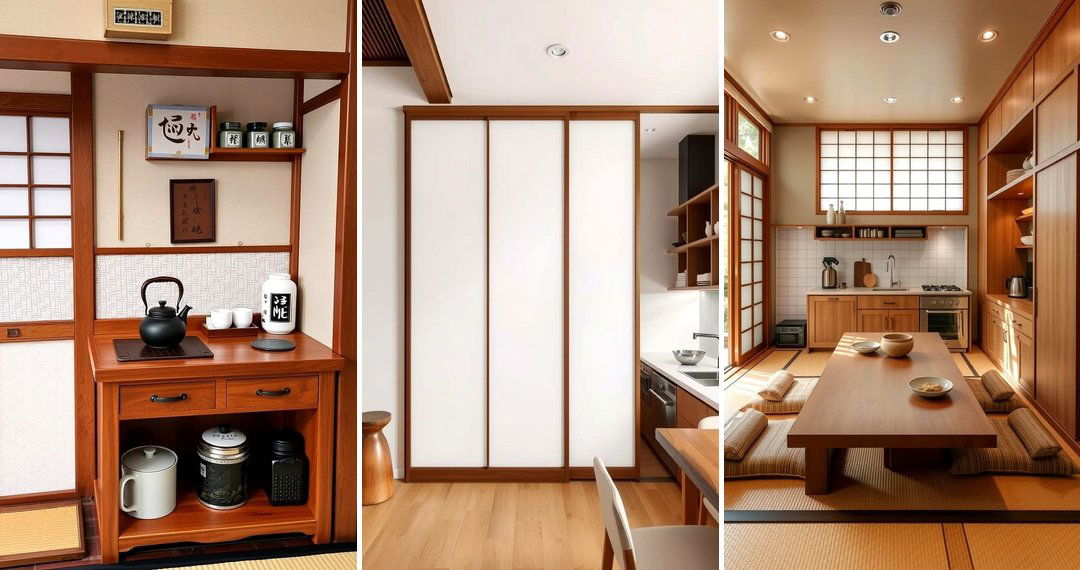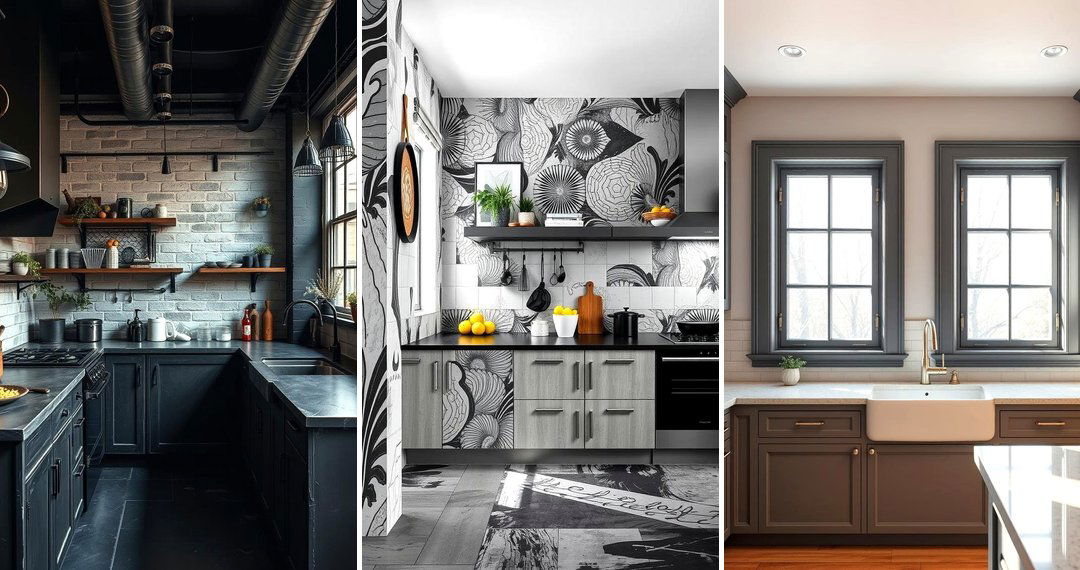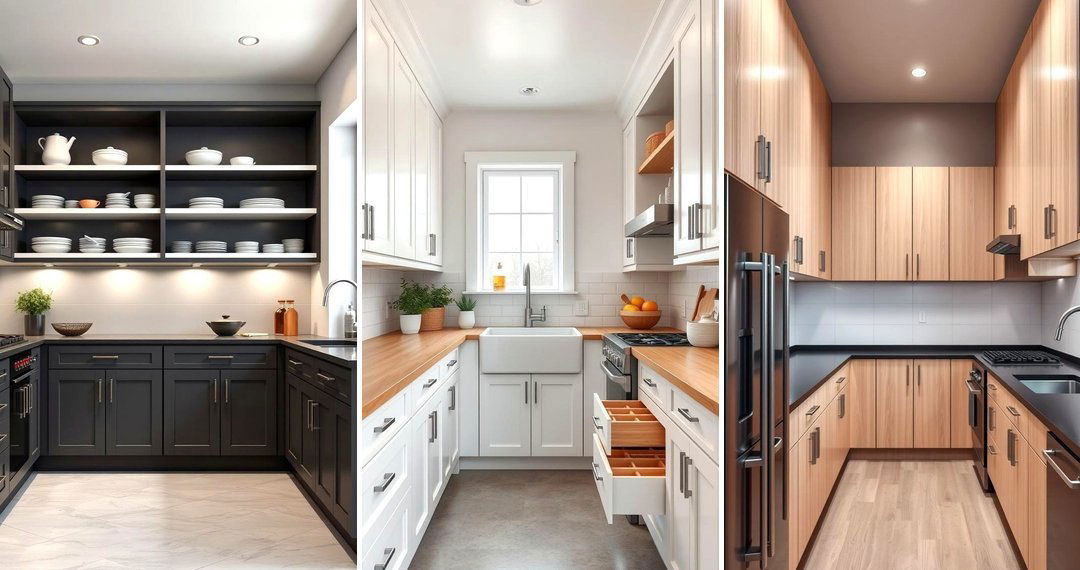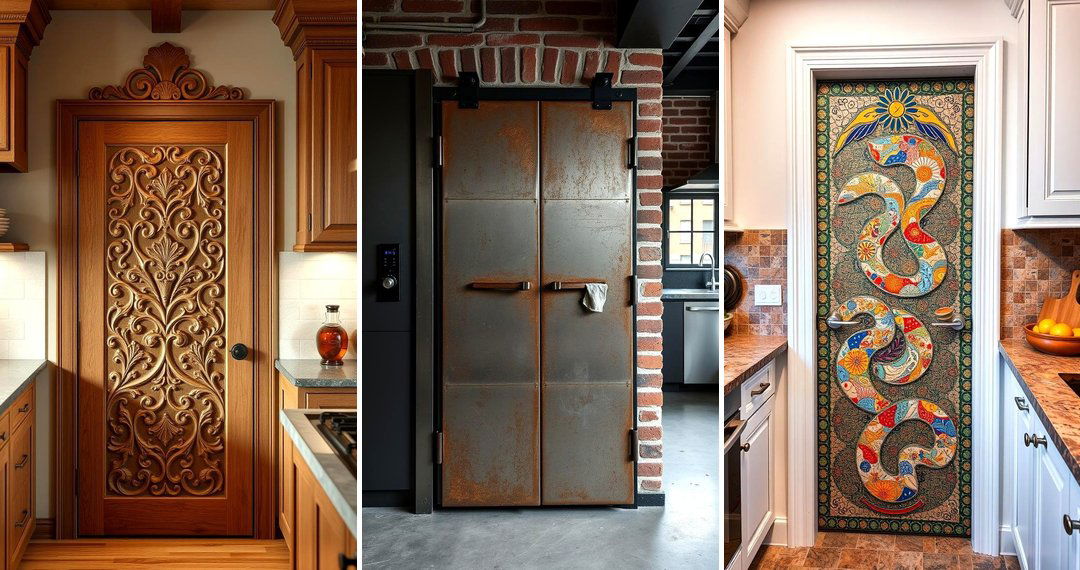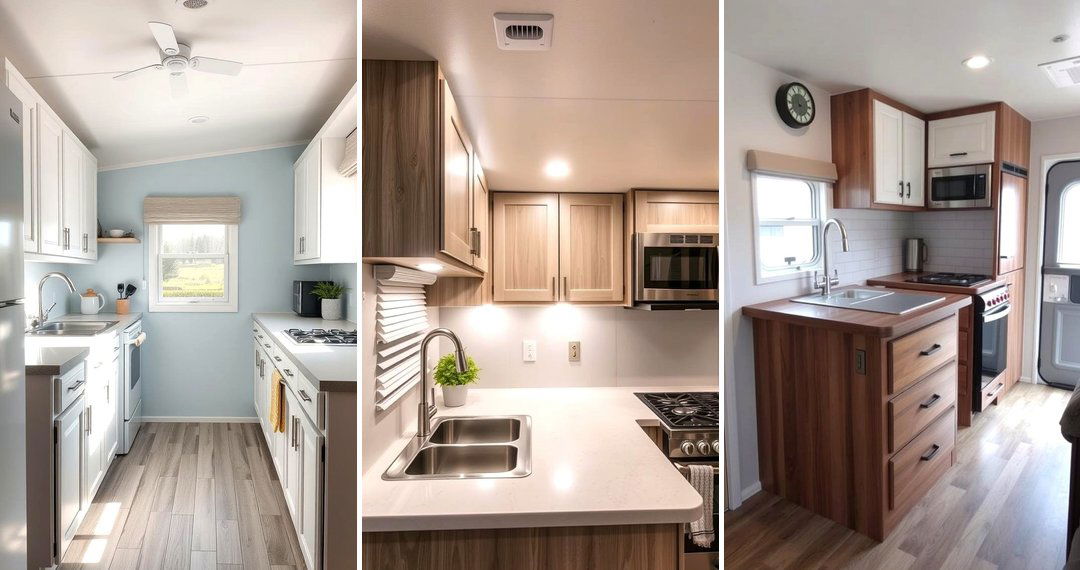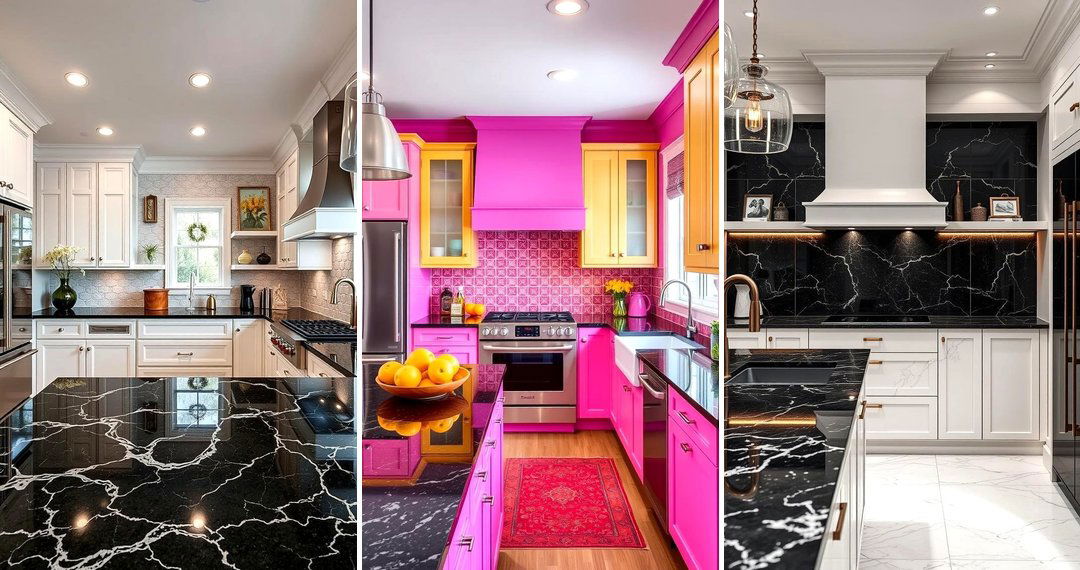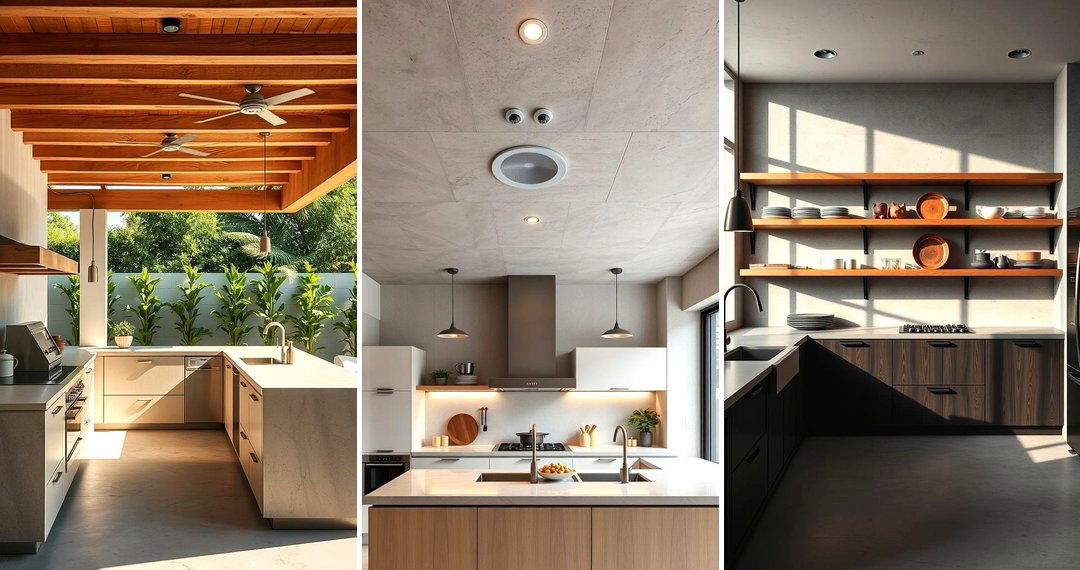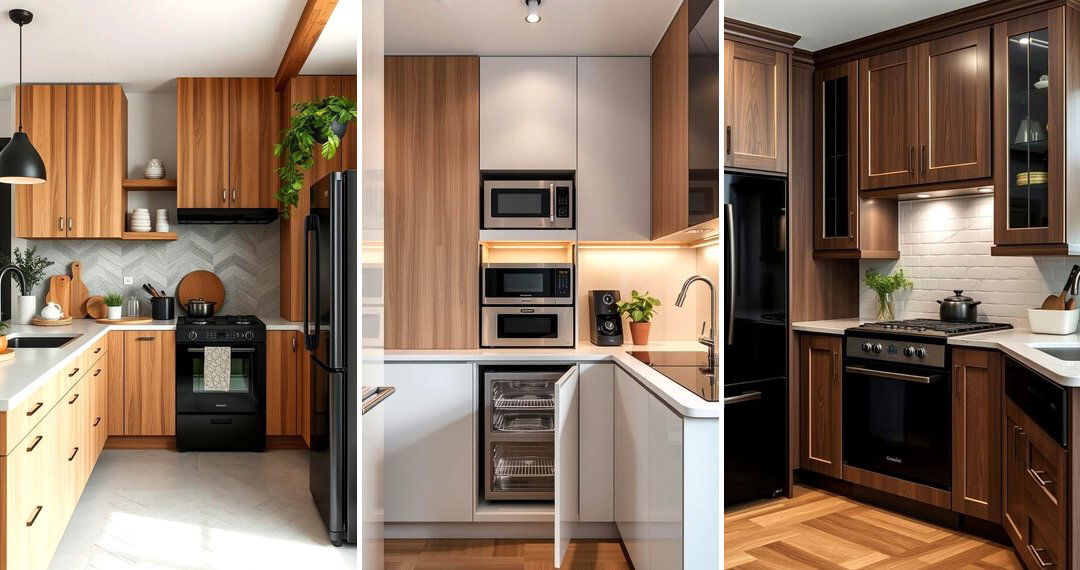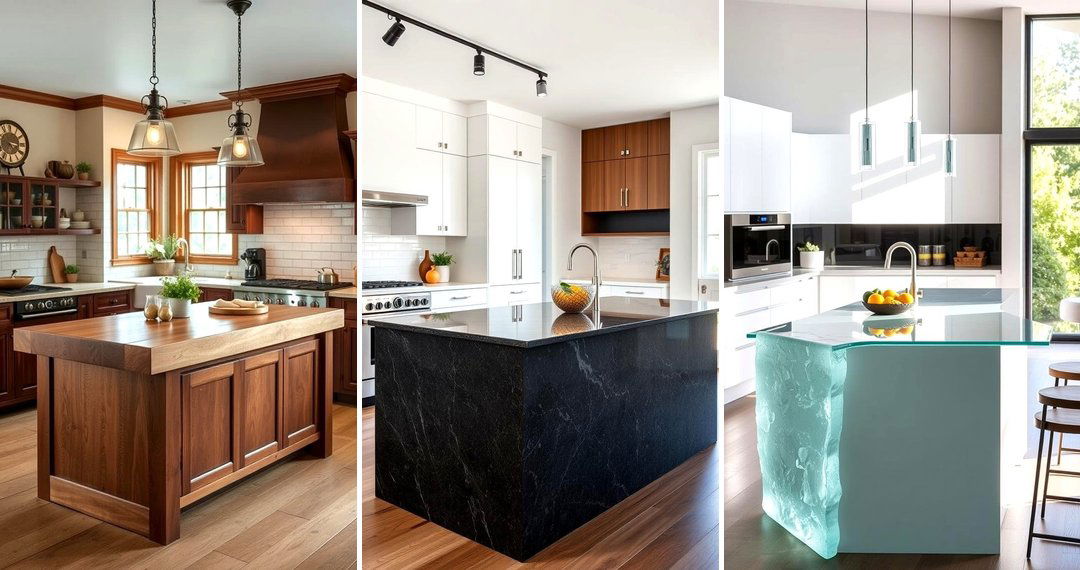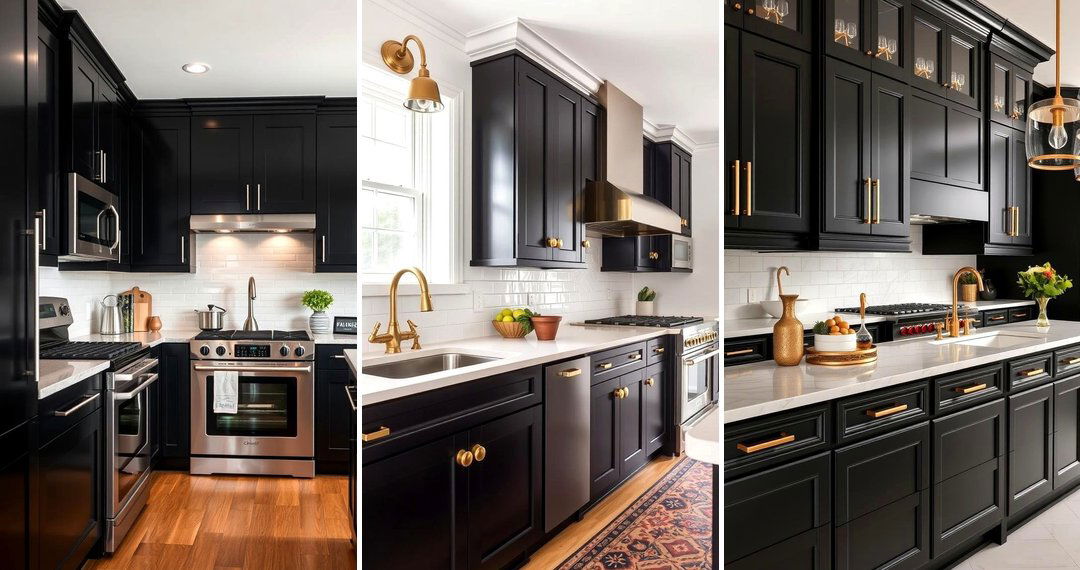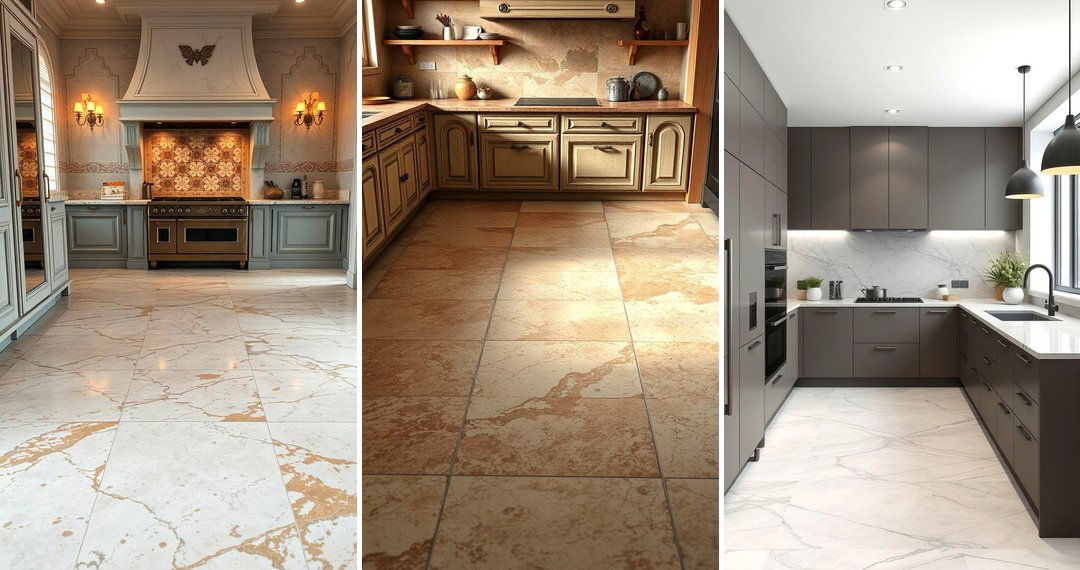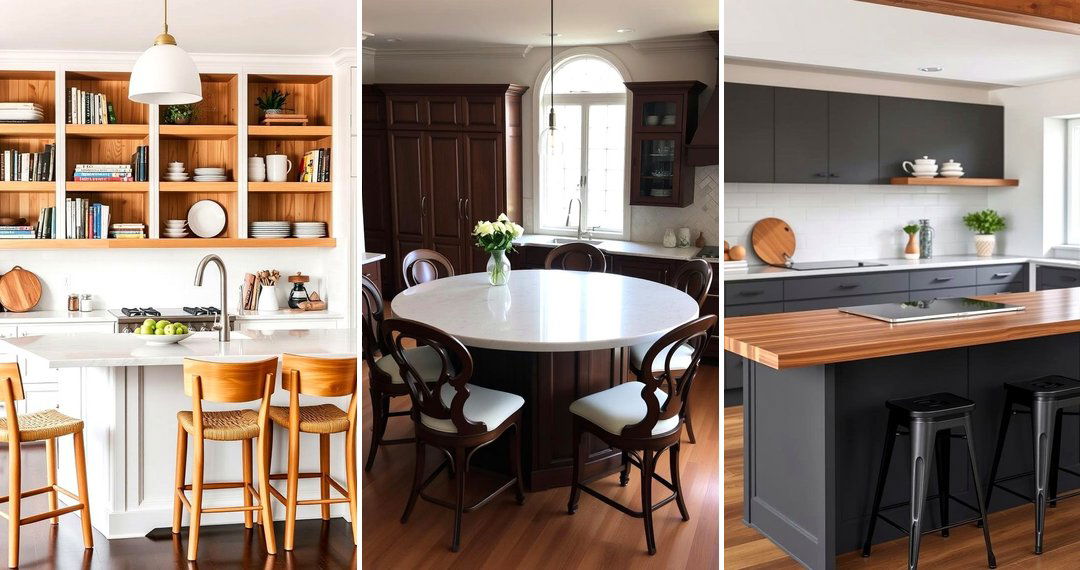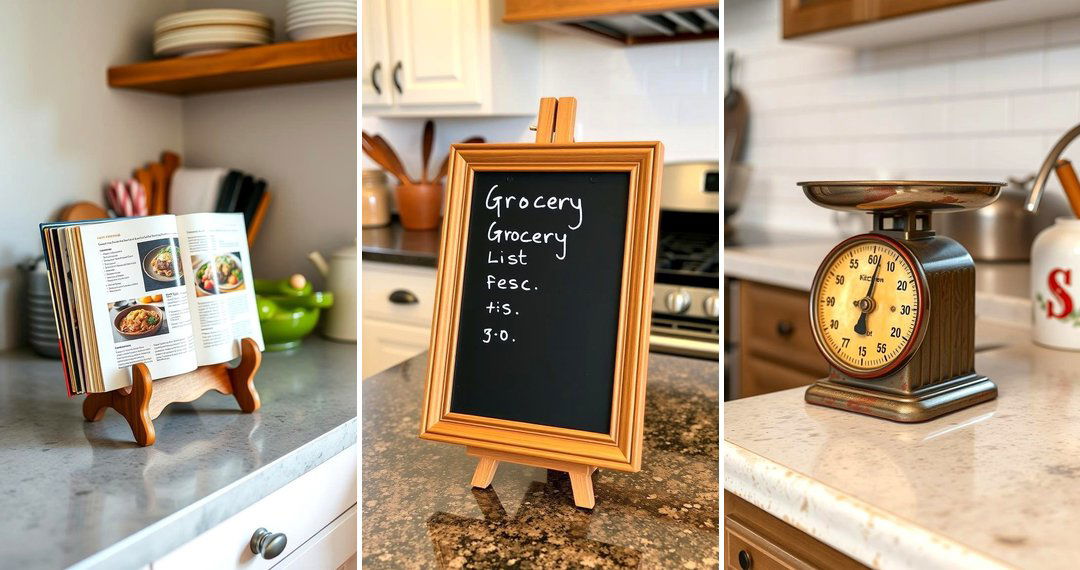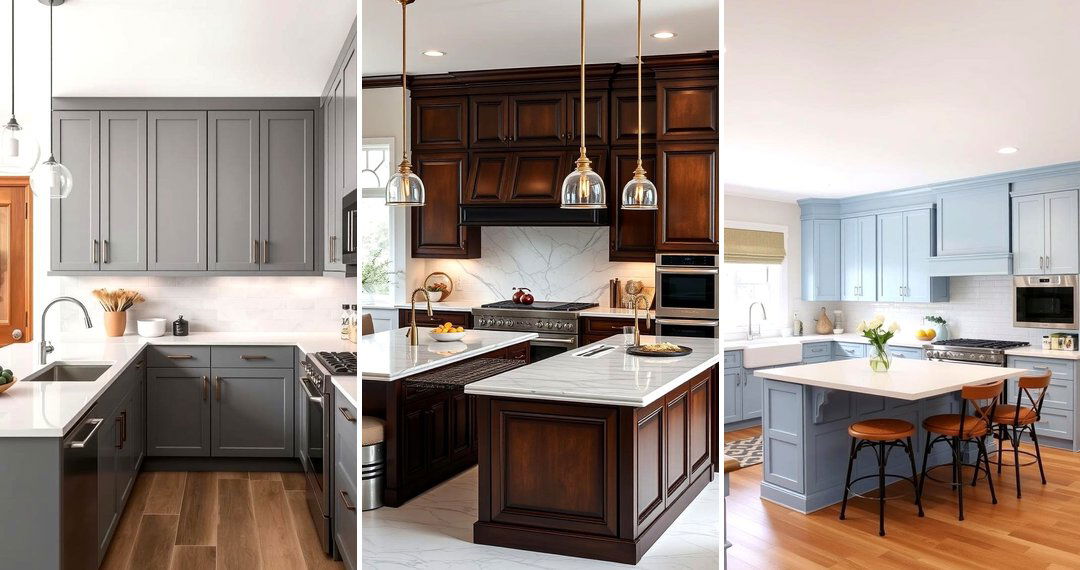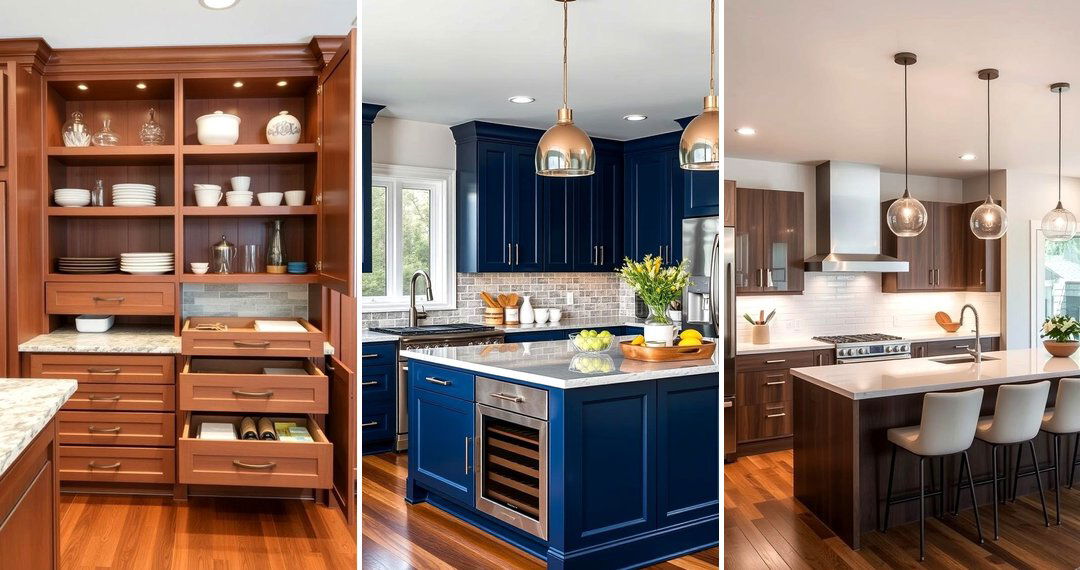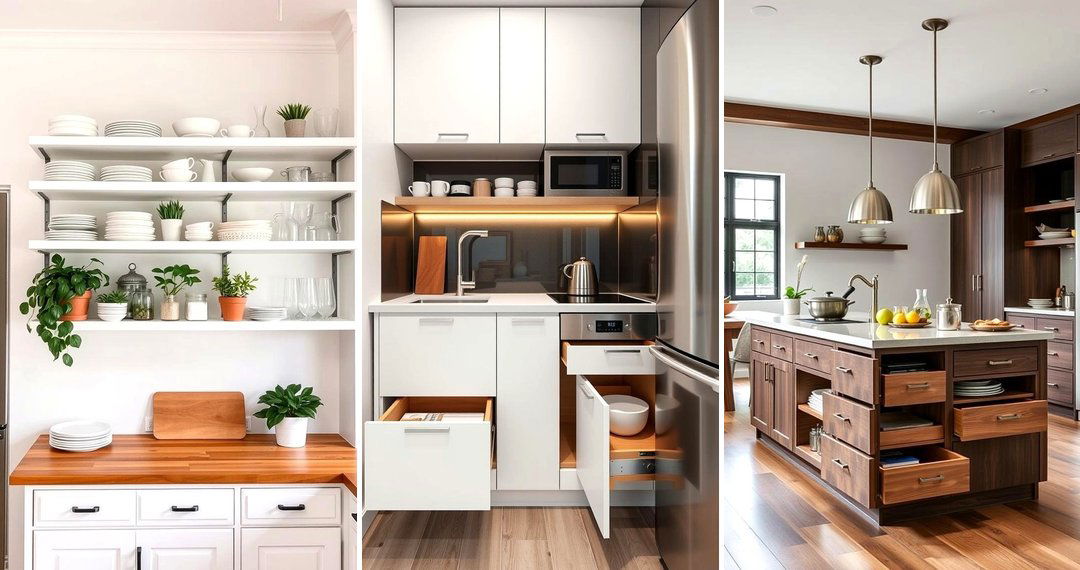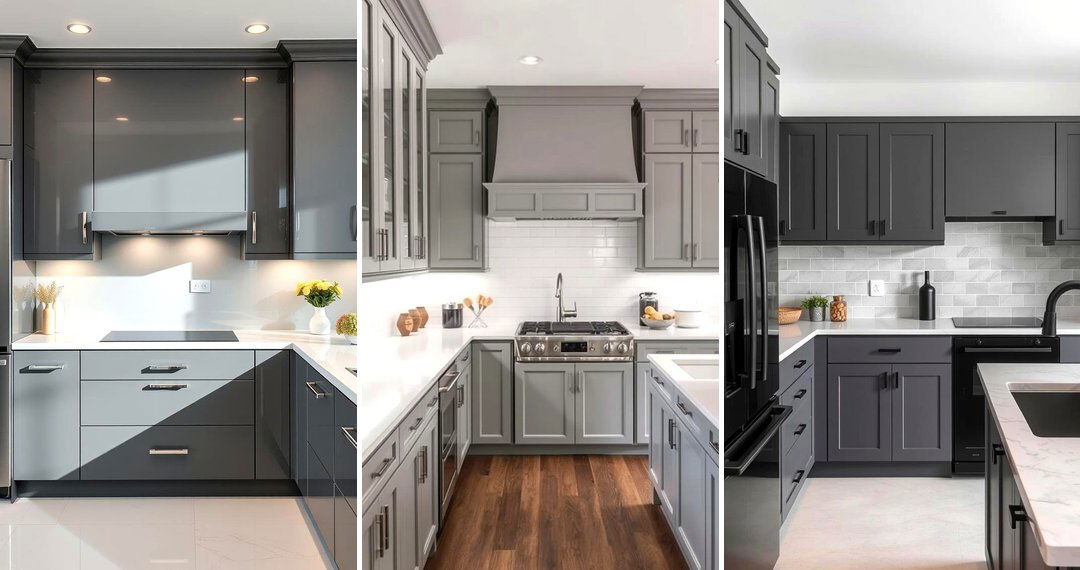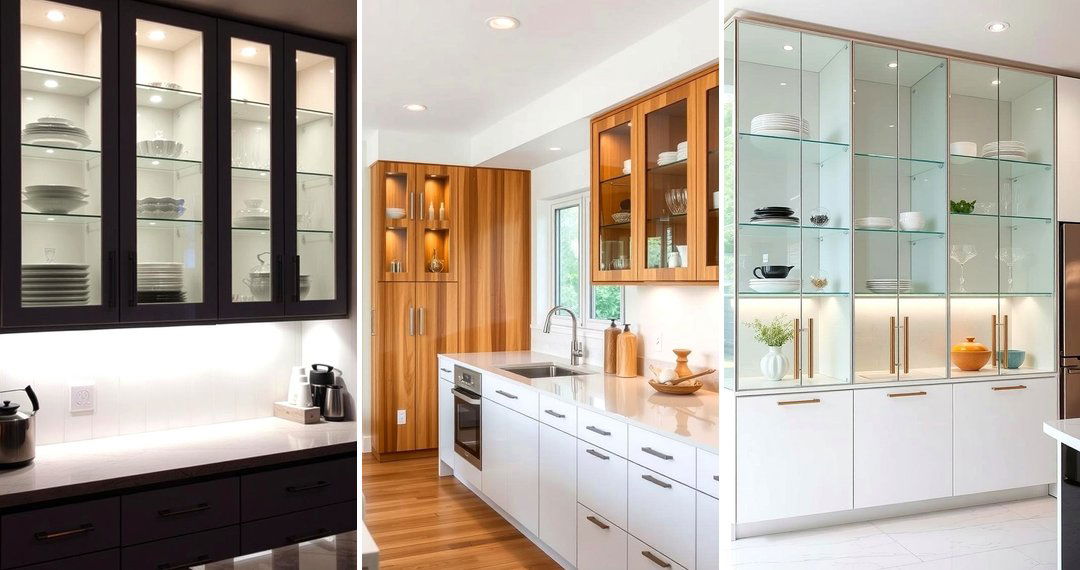Minimalist kitchens are the perfect blend of function, form, and simplicity. By embracing the minimalist philosophy, kitchens become not only easier to maintain but also more calming and stylish. The concept revolves around less clutter, practical designs, and an overall feeling of open space. Each of these 24 ideas offers you an opportunity to rethink your kitchen space, focusing on clever designs, practical solutions, and an aesthetically pleasing environment. The beauty of minimalism is in its ability to create a serene atmosphere while still being fully functional. Let’s dive into these minimalist kitchen ideas and explore how you can transform your kitchen into a sleek, practical haven.
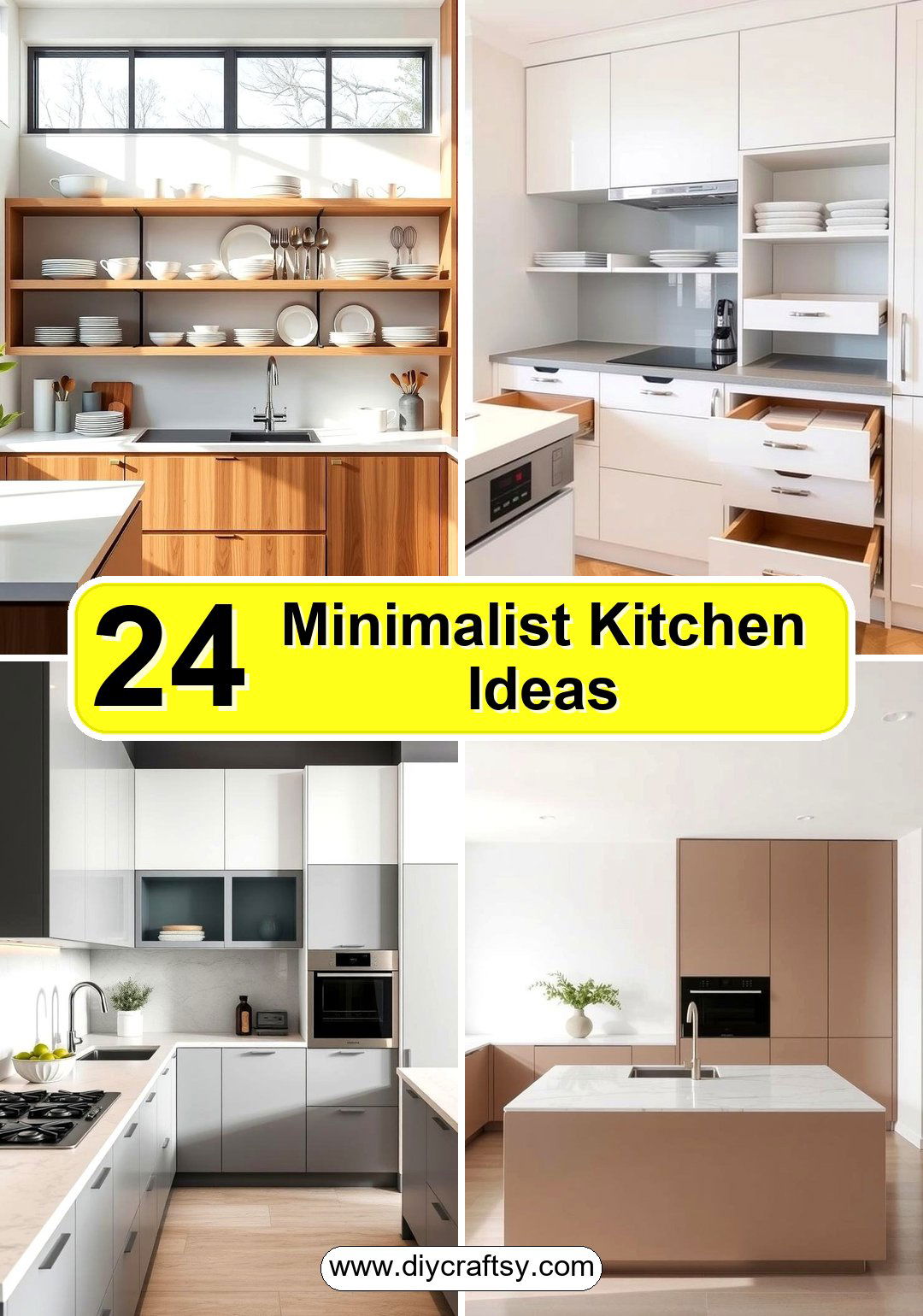
1. Keep It Simple with Open Shelving
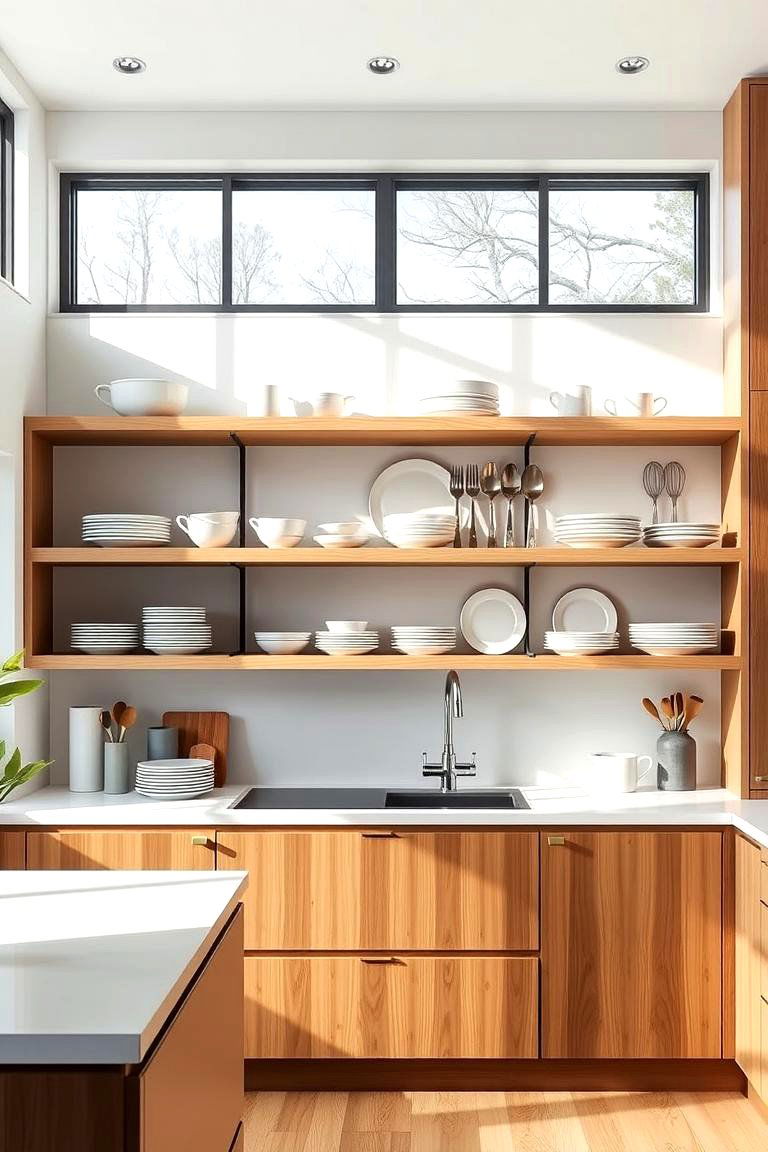
Open shelving is a minimalist kitchen trend that promotes simplicity and accessibility. It eliminates the need for bulky cabinets and gives your kitchen an airy, open feel. By displaying only essential kitchenware or decorative items, you instantly declutter the space. This simple approach encourages you to keep only the items you truly use or love, helping you reduce unnecessary clutter. The exposed shelving can be both functional and stylish, with wood, metal, or glass shelves adding texture and character to your kitchen. For the ultimate minimalist effect, keep the items on display neat and organized.
2. Use Neutral Color Palettes
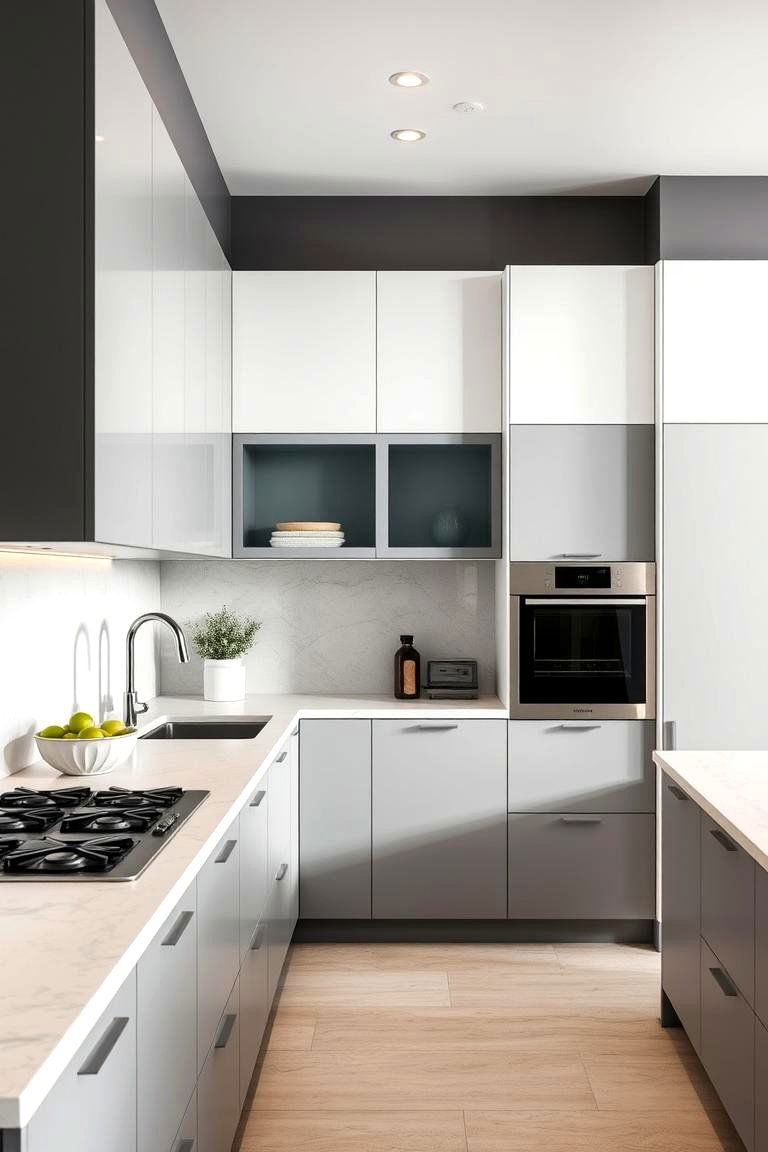
The color palette of a minimalist kitchen plays a significant role in enhancing its calming and peaceful atmosphere. Neutral colors such as whites, grays, blacks, and earthy tones create a clean, spacious feel. These colors allow your kitchen to look modern and timeless, while also providing the perfect backdrop for minimalist furniture and accessories. By using subtle shades, the kitchen remains serene and uncluttered, promoting relaxation and focus. Opting for muted tones can also make the space appear larger, especially in smaller kitchens where every inch matters.
3. Invest in Hidden Storage Solutions
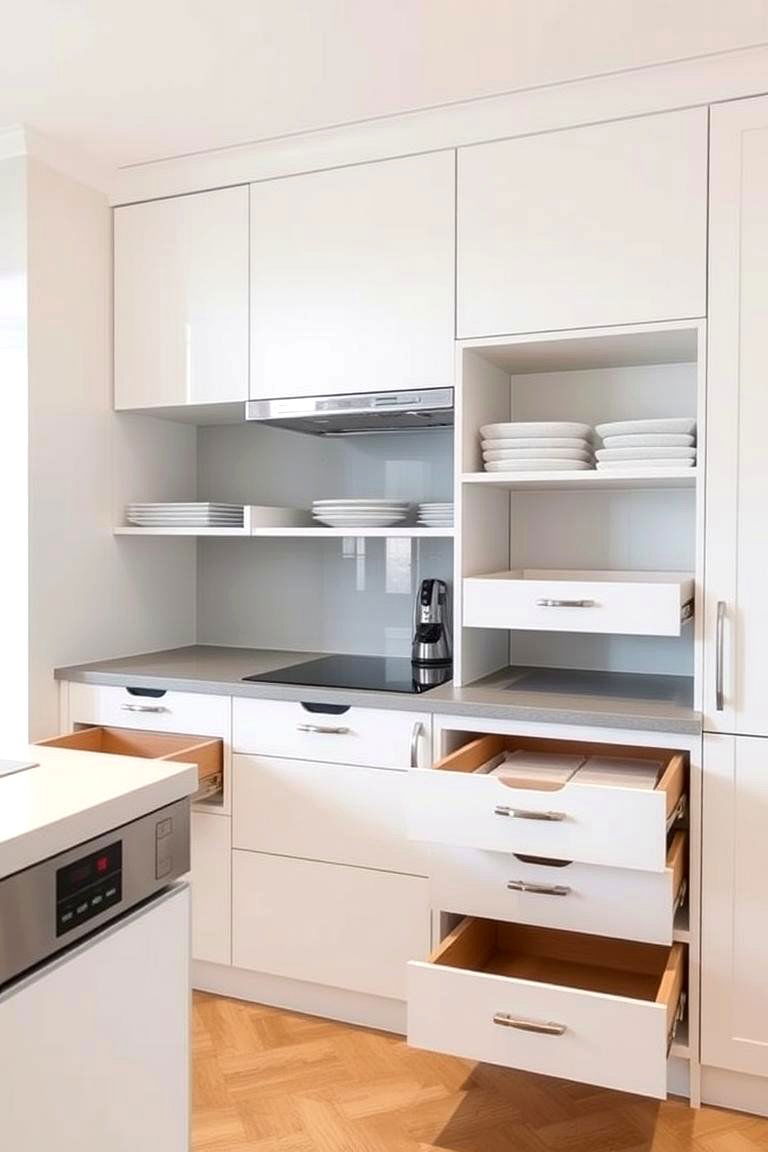
Hidden storage is a game-changer for a minimalist kitchen. Instead of showcasing every utensil or appliance, hidden compartments and clever storage ideas allow you to keep items out of sight, creating a cleaner and more organized space. Built-in cabinets with soft-close drawers or pull-out shelving can help you maximize your kitchen’s functionality without sacrificing style. Whether you install under-counter cabinets or opt for pull-out pantry shelves, hidden storage ensures that everything has its place, contributing to the overall simplicity of the space.
4. Streamlined Kitchen Appliances
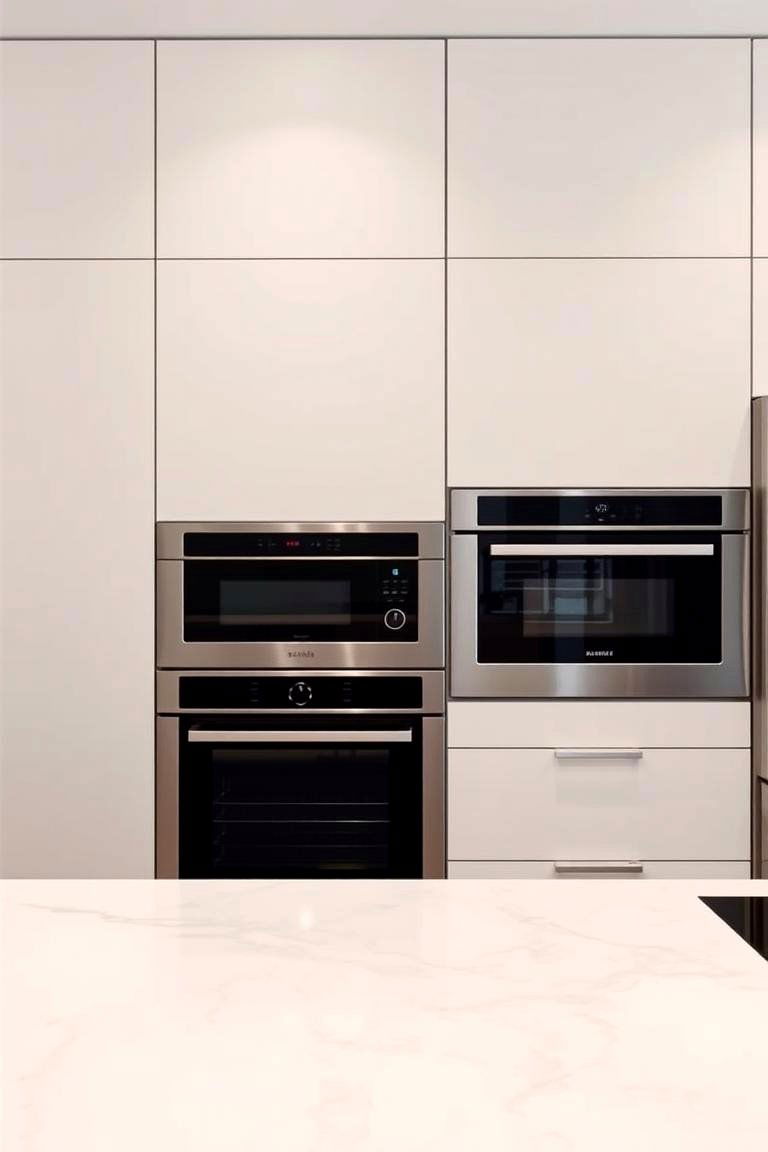
In a minimalist kitchen, less is more, especially when it comes to appliances. Choose sleek, modern, and energy-efficient appliances that blend seamlessly with your kitchen design. Instead of having bulky devices cluttering countertops, opt for built-in appliances that save space and create a unified, clean look. The key is functionality without excess. High-quality, minimalist designs ensure your appliances are both practical and aesthetically pleasing, helping to maintain the calm, organized atmosphere you’re aiming for.
5. Go for Minimalist Lighting Fixtures
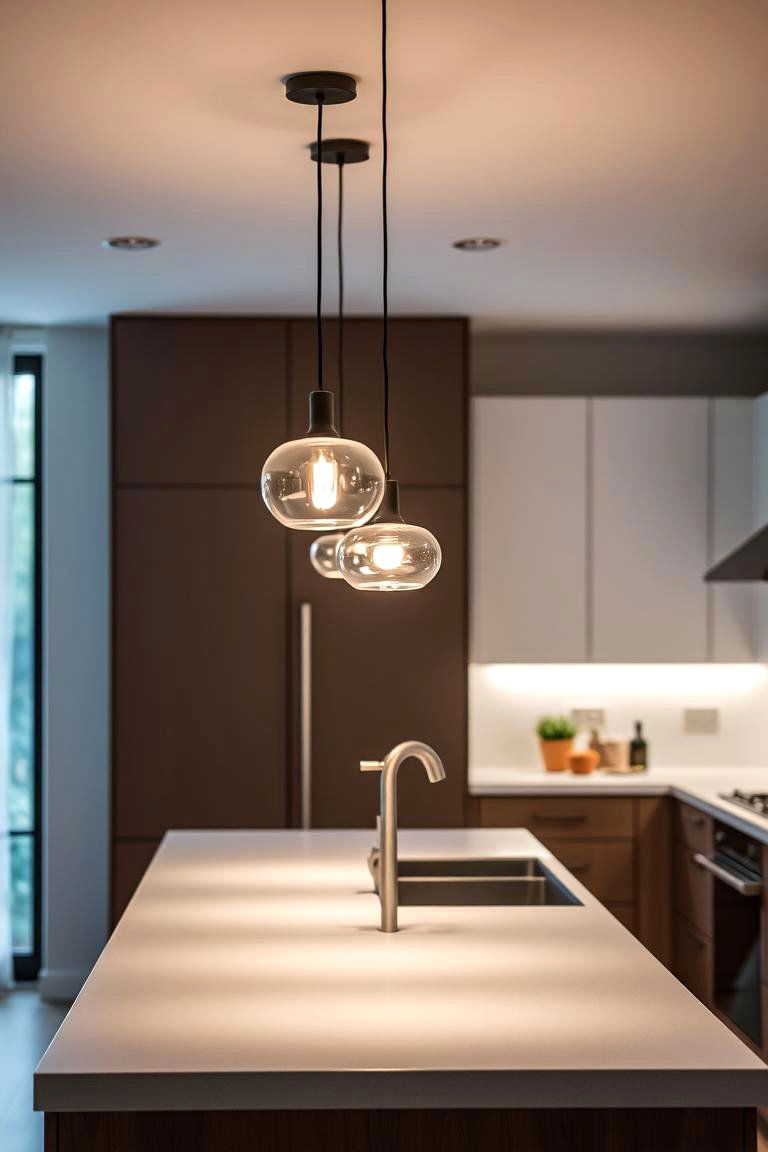
Lighting is an essential yet often overlooked element in minimalist kitchen design. Choose simple, understated lighting fixtures that provide ample light while maintaining a minimalist aesthetic. Pendant lights or recessed lighting are excellent choices, as they add character without overwhelming the space. For an even more streamlined look, choose fixtures in materials like matte metal or clear glass. Soft, diffused lighting can also enhance the calming ambiance, making your kitchen feel like a welcoming, peaceful space to work or unwind in.
6. Embrace Natural Materials
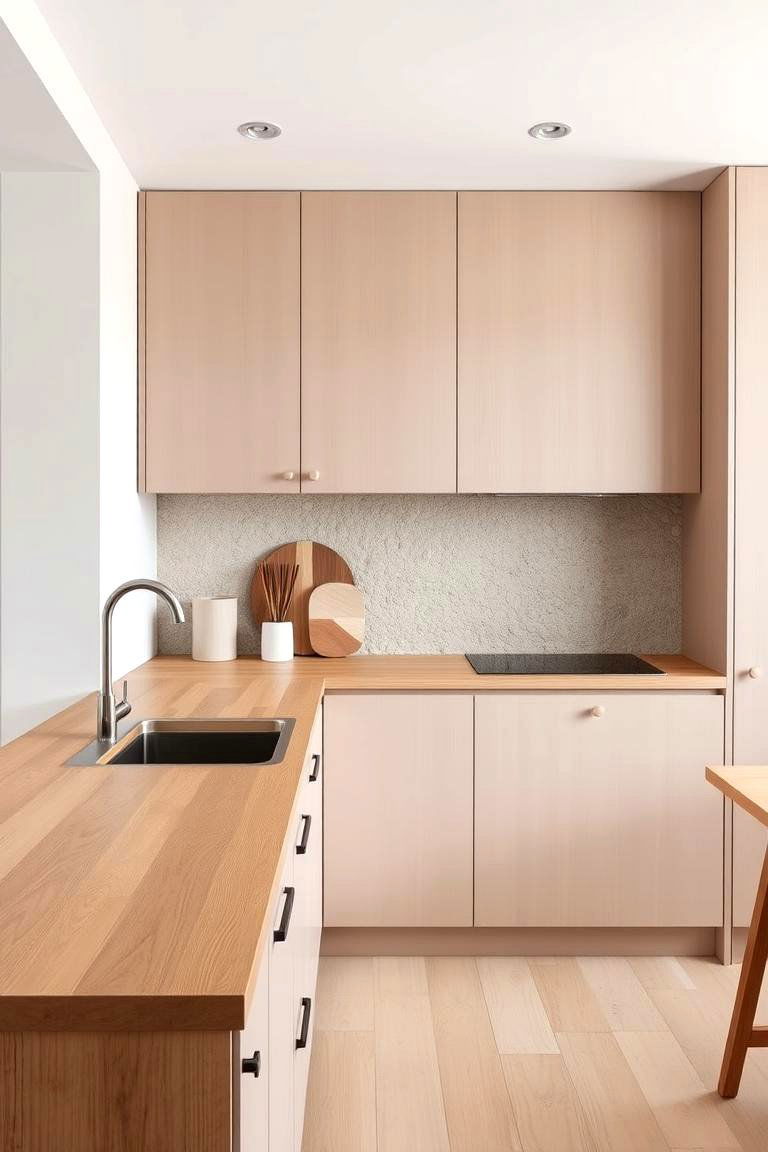
Minimalist kitchens often feature natural materials such as wood, stone, or marble. These materials not only add texture and warmth but also maintain a timeless aesthetic. Wood cabinetry, stone countertops, or marble backsplash tiles create a sophisticated yet simple atmosphere that complements a minimalist kitchen’s overall design. The beauty of natural materials is their ability to age gracefully, ensuring that your kitchen will look just as stylish in years to come. Furthermore, the use of sustainable, eco-friendly materials aligns with the minimalist philosophy of reducing waste.
7. Focus on Functional Layouts
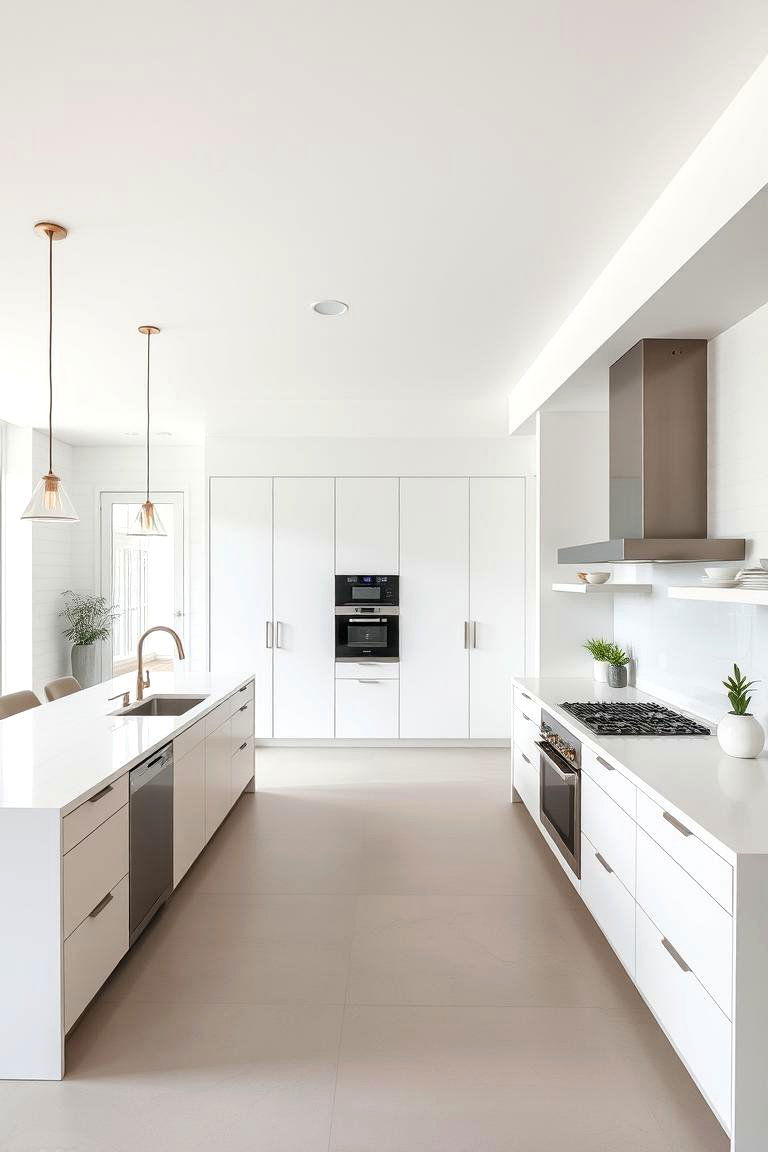
A minimalist kitchen layout prioritizes functionality above all else. Open spaces and thoughtful planning help ensure that every inch serves a purpose. To achieve this, focus on creating a kitchen flow that suits your cooking style, whether it’s a streamlined work triangle or a kitchen island as a central hub. Keep the countertops clear and the flow of movement simple to avoid unnecessary clutter. The idea is to ensure that everything you need is within reach, but without overwhelming the space with unnecessary items or appliances.
8. Choose Simple Cabinetry Designs
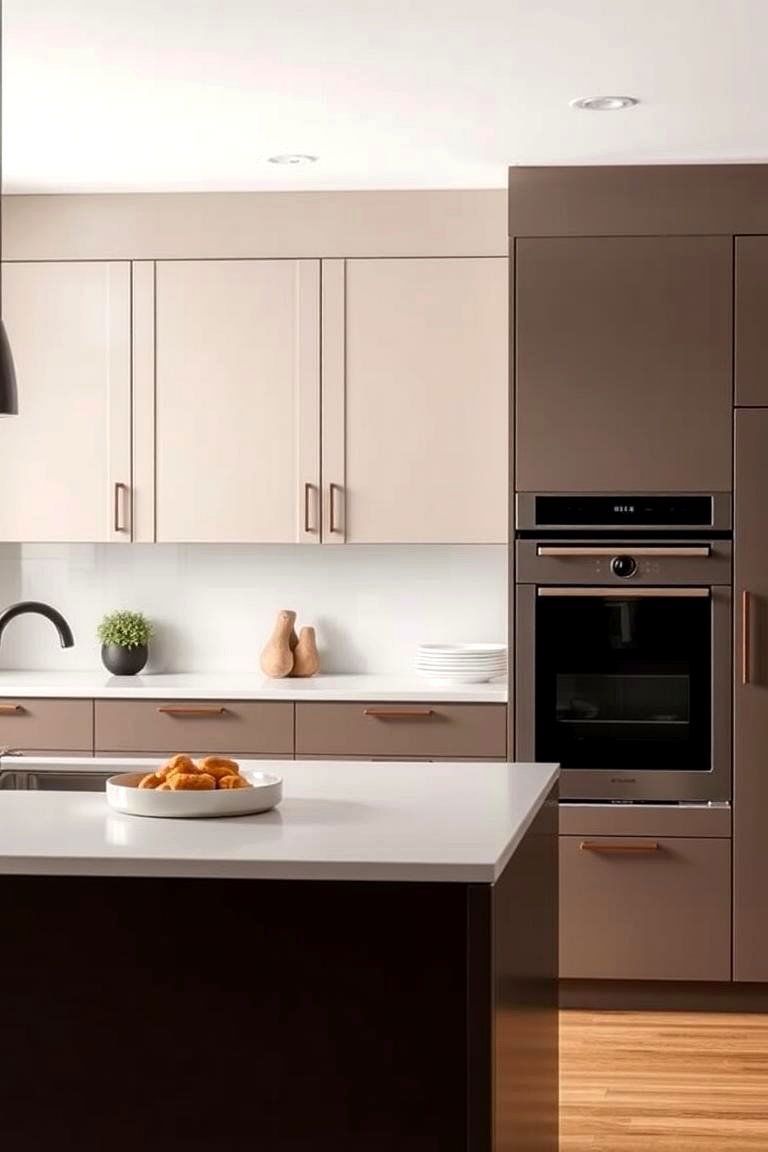
When it comes to cabinets in a minimalist kitchen, simplicity is key. Opt for flat-panel, handle-free doors or drawers to create a smooth, sleek look. This minimalist cabinetry not only looks cleaner but is also easier to maintain. With fewer nooks and crannies for dirt to accumulate, cleaning becomes a breeze. Furthermore, opting for neutral-colored or monochromatic cabinetry helps enhance the calm atmosphere and ensures the kitchen remains visually cohesive. Choose cabinetry that complements the overall minimalist theme without introducing unnecessary decorative details.
9. Incorporate a Minimalist Kitchen Island
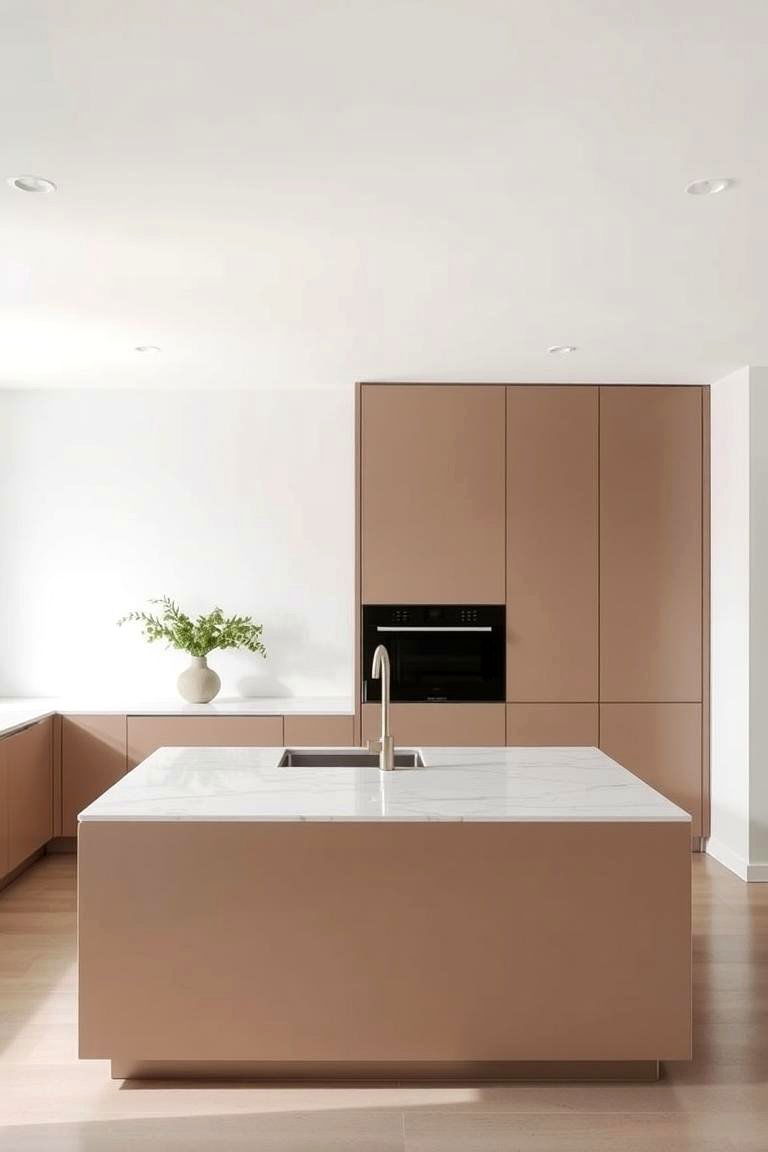
A minimalist kitchen island can serve as both a functional and aesthetic centerpiece. With its clean lines and simple design, it offers extra workspace for meal prep or serving without overpowering the room. Choose an island with a smooth surface, such as marble or wood, and keep it clutter-free to preserve the minimalist look. Whether integrated with storage or left open for an airy feel, a well-designed island provides balance and practicality without detracting from the kitchen’s streamlined appearance.
10. Use Simple, Functional Countertops
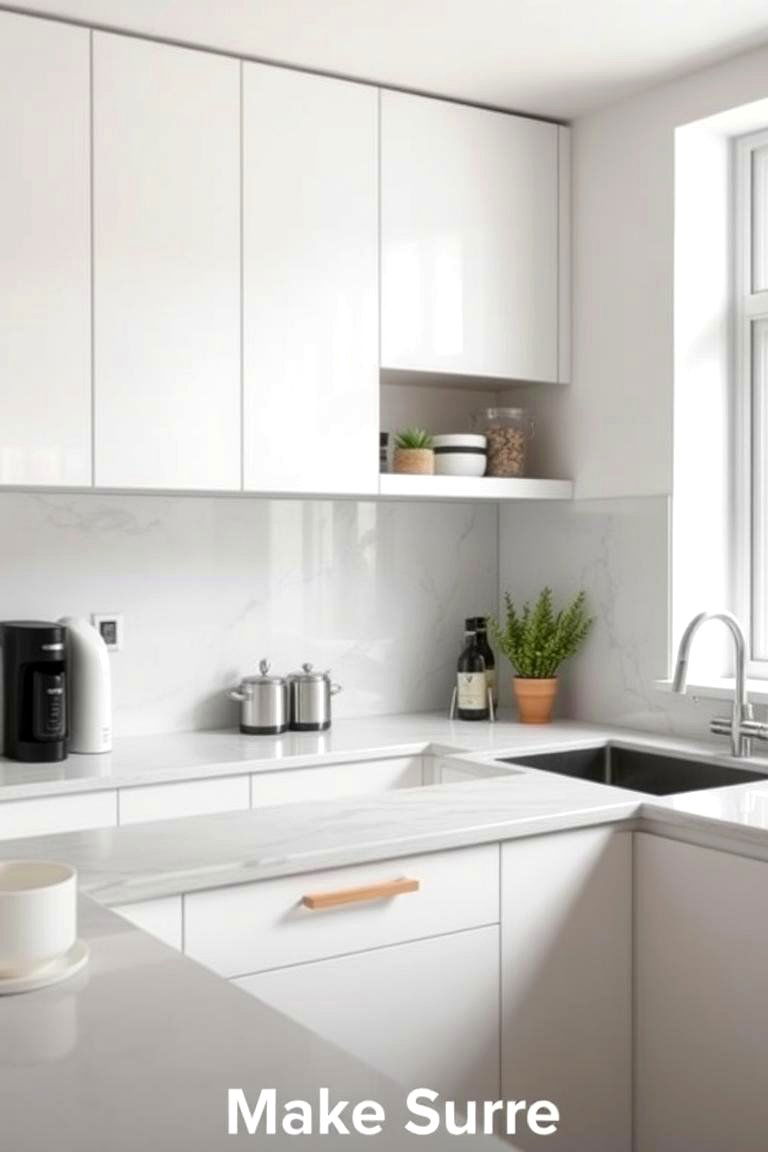
Minimalist kitchen countertops should be both practical and visually appealing. Choose surfaces that are easy to clean and maintain, such as quartz, granite, or butcher block. Keep the countertop free from clutter by storing utensils, cutting boards, or spices in cabinets or drawers. A minimalist countertop emphasizes the kitchen’s clean lines and open space, making it look larger and more organized. For an added touch, incorporate a backsplash that complements the countertops but doesn’t compete with them for attention.
11. Create a Seamless Flow with Matching Floors
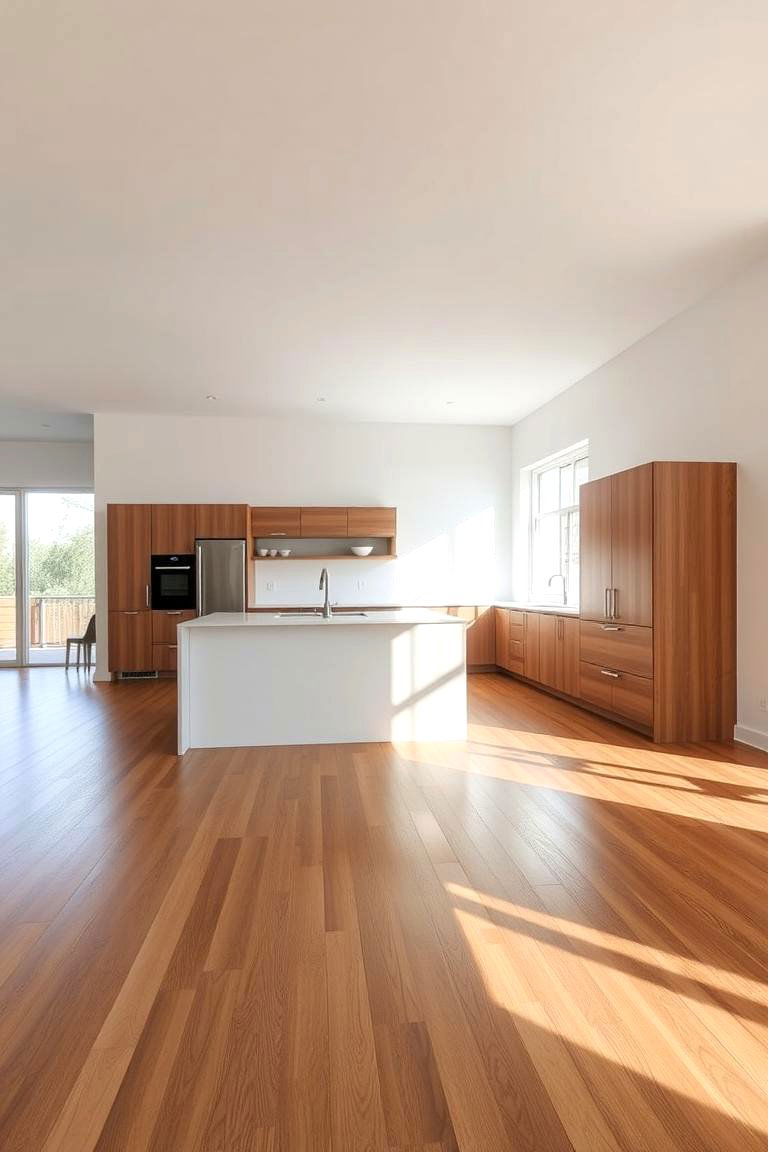
To maintain the minimalist look, consider using flooring materials that blend seamlessly with your kitchen’s design. Hardwood, concrete, or polished stone are excellent options for creating a cohesive, flowing space. Choose a light or neutral color that will expand the space and make it feel open and inviting. Flooring should complement the other elements of the room, from the cabinetry to the countertops, ensuring that everything works together harmoniously. By using the same flooring throughout the kitchen, you can create a unified, streamlined aesthetic.
12. Keep Wall Decor to a Minimum
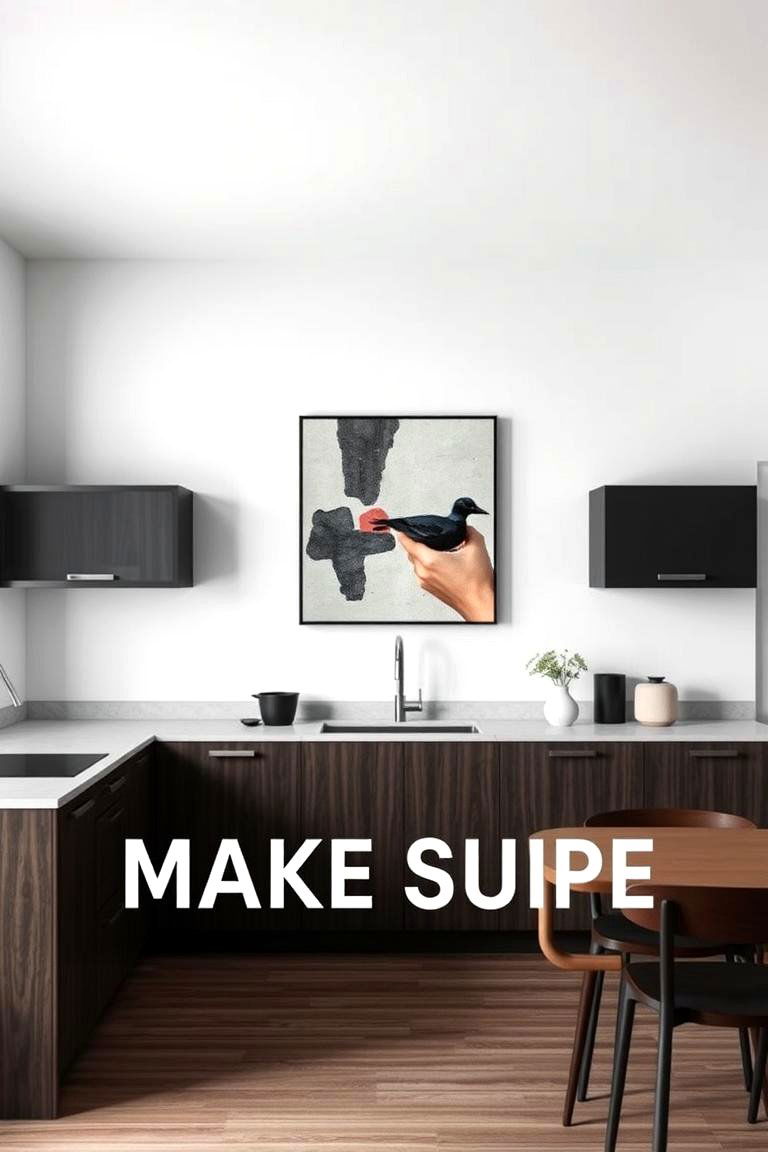
In a minimalist kitchen, wall decor should be kept to a minimum to avoid visual clutter. Instead of adding numerous decorations or framed prints, opt for a single statement piece or leave the walls bare for a clean, open feel. If you do incorporate art or accessories, make sure they follow the minimalist aesthetic, using simple, geometric shapes or neutral colors. This approach keeps the focus on the functional aspects of the kitchen while still allowing for a touch of personality.
13. Go For Smart Kitchen Gadgets
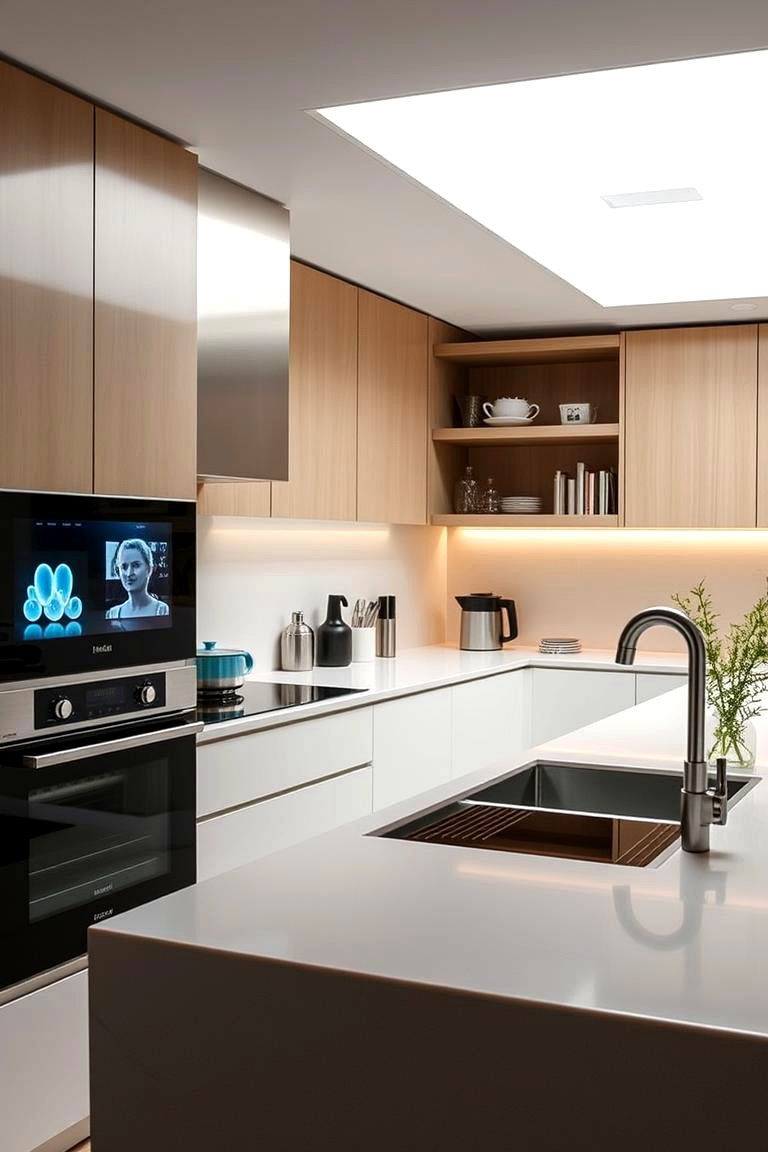
Smart kitchen gadgets are a great way to enhance the functionality of your minimalist kitchen. These gadgets, such as touchless faucets, smart ovens, and voice-activated assistants, streamline everyday tasks while maintaining a sleek, uncluttered look. Incorporating technology into your kitchen allows you to reduce the number of physical items on the counters, ensuring that everything serves a purpose. When choosing smart gadgets, focus on those that integrate seamlessly with your existing kitchen design, complementing the minimalist ethos without overwhelming the space.
14. Simplify Your Sink Area
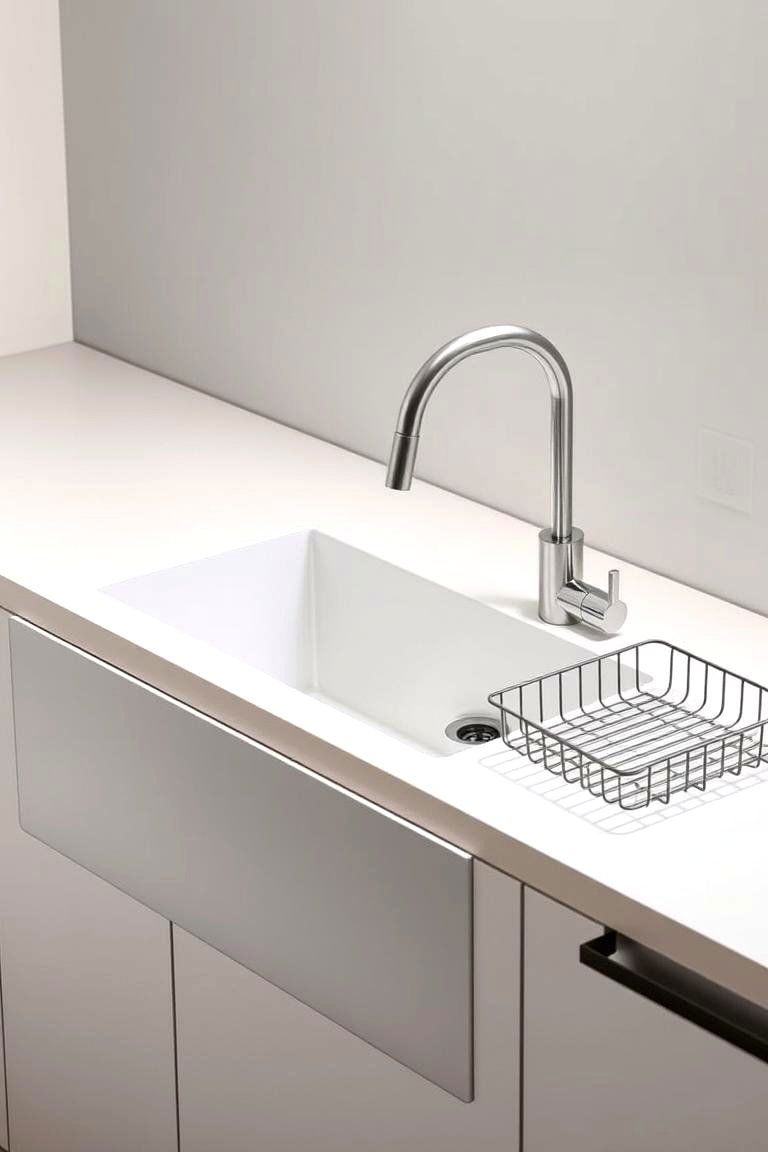
A minimalist kitchen sink should be sleek, functional, and free from unnecessary distractions. Opt for an under-mount sink with clean lines and a simple design. Keep the area around the sink uncluttered by using a single dish rack or opting for built-in drying areas. The idea is to minimize visual clutter while maximizing convenience. For an even more minimalist approach, consider a touchless faucet or a pull-out faucet for easy maneuverability. A tidy, simple sink area promotes a sense of calm and organization in the kitchen.
15. Use Multi-Functional Furniture
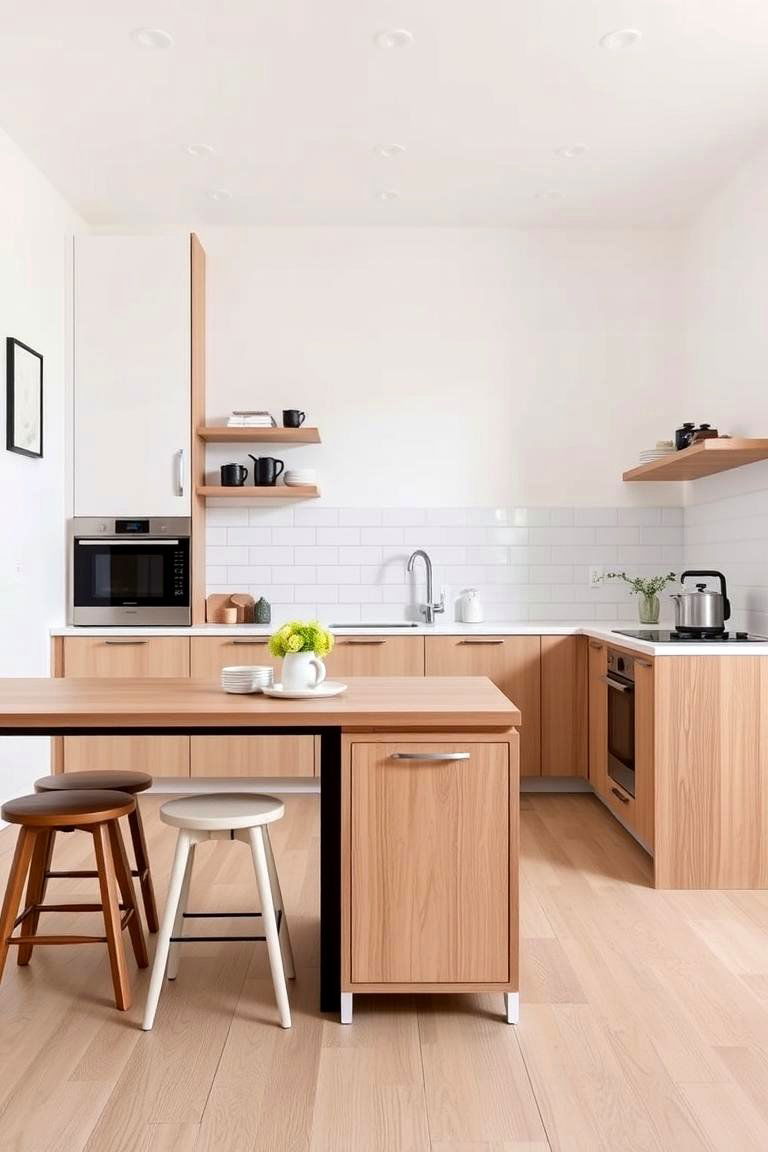
In a minimalist kitchen, multi-functional furniture can help you save space while maintaining a clean and organized look. A kitchen table with built-in storage, or a bar cart that doubles as a serving area, provides added functionality without compromising on style. Look for pieces that can easily adapt to different tasks, such as foldable tables or extendable islands. Multi-functional furniture not only saves space but also reduces the need for additional items, contributing to the overall minimalist philosophy of simplicity and practicality.
16. Embrace the Beauty of Concrete
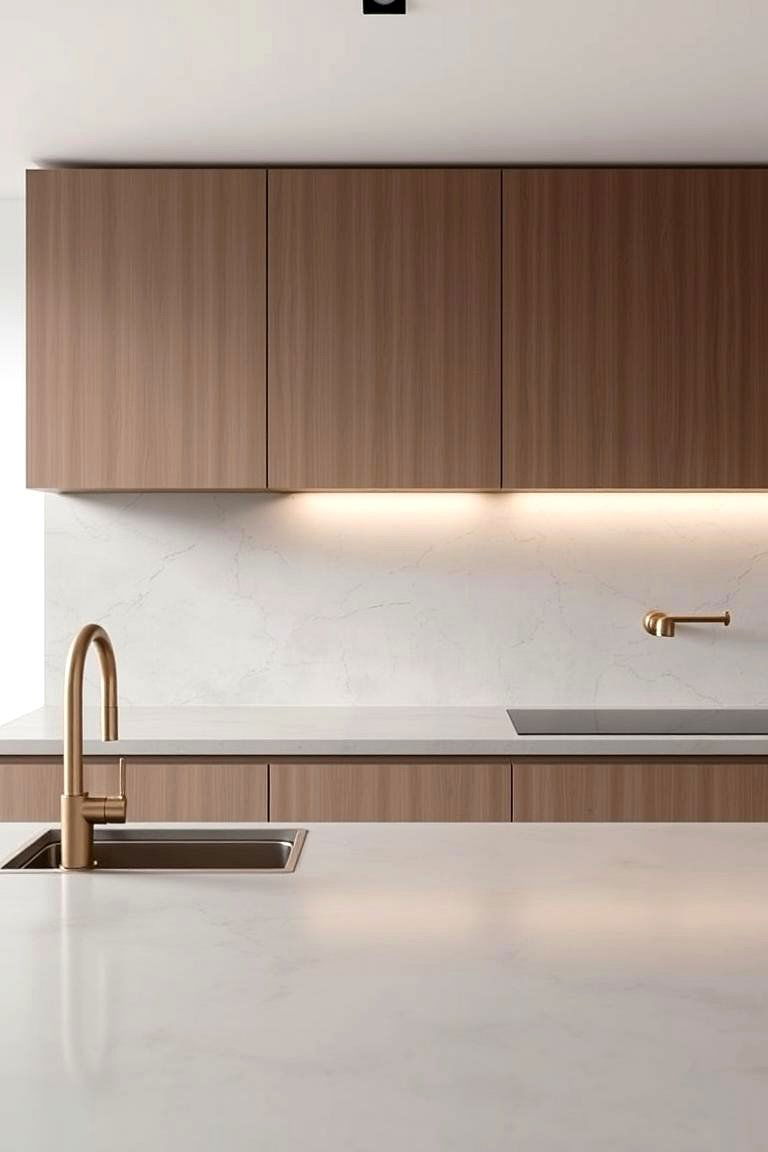
Concrete surfaces are gaining popularity in minimalist kitchen designs for their sleek, industrial feel. Whether used for countertops, flooring, or even walls, concrete provides a smooth, modern look that complements other minimalist elements. Concrete is also highly durable and easy to maintain, making it a practical choice for a busy kitchen. For a more refined look, you can polish the concrete for a smooth, shiny surface that enhances the kitchen’s clean aesthetic. Concrete’s neutral tones work well with other materials, adding to the overall cohesive feel of the space.
17. Incorporate Glass Accents
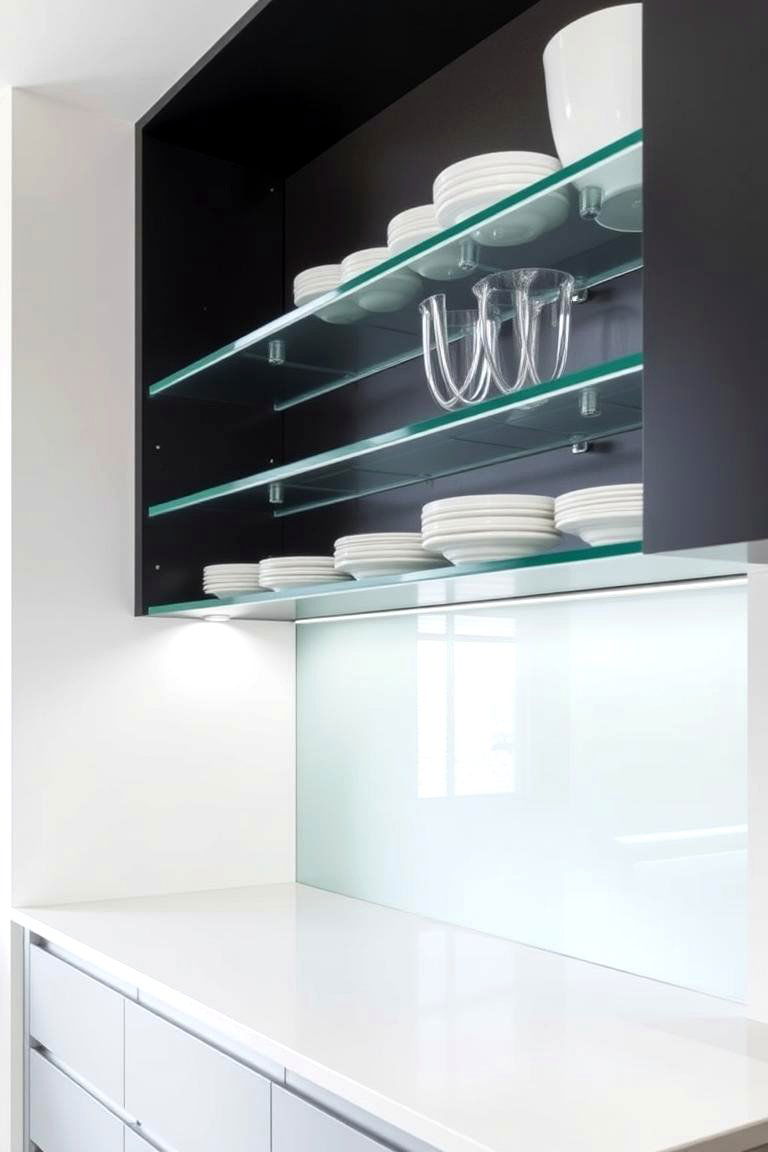
Glass is a great material to incorporate into a minimalist kitchen. Whether in the form of glass shelving, cabinet doors, or a backsplash, it helps create an open, airy feel. Glass elements add a touch of sophistication while allowing light to pass through, enhancing the kitchen’s bright, spacious atmosphere. Keep the glass accents simple and functional to maintain the minimalist aesthetic. For example, clear glass shelving can showcase a few selected kitchen essentials, while frosted glass adds a soft, subtle texture without drawing attention away from the overall design.
18. Use Floating Cabinets
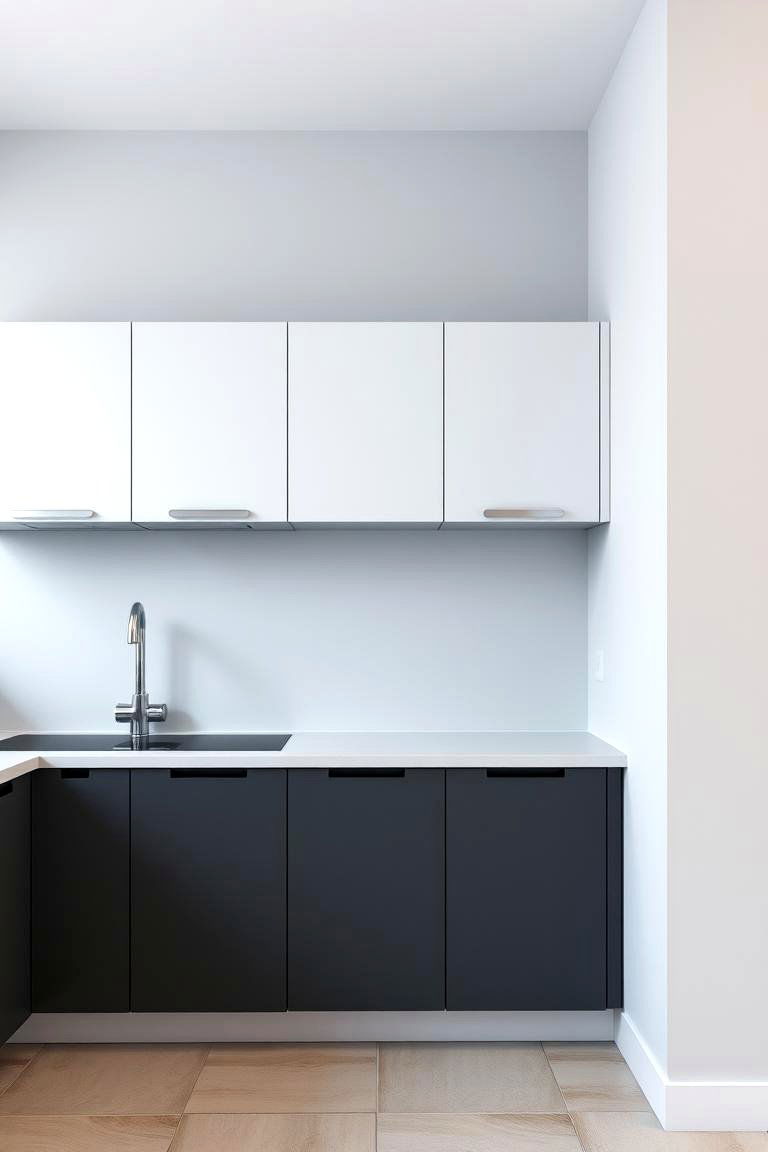
Floating cabinets are a smart design choice for a minimalist kitchen, giving the space an open, modern feel. These cabinets, which are mounted on the wall without visible supports, create the illusion of more floor space. The absence of bulky, ground-level cabinetry makes the kitchen appear larger and more spacious. Floating cabinets are also easy to clean, as the area beneath them remains open. Choose sleek, handle-free designs for a truly minimalist look that emphasizes simplicity and functionality.
19. Invest in Minimalist Hardware

Hardware might seem like a small detail, but in a minimalist kitchen, every element counts. Choose simple, clean-lined hardware like thin handles or touch-release mechanisms that blend seamlessly into the cabinetry. Stainless steel or matte finishes are popular choices for minimalist kitchens as they provide a sleek, modern look. By selecting minimalist hardware, you reduce visual clutter while maintaining the kitchen’s overall streamlined aesthetic.
20. Choose Built-In Appliances
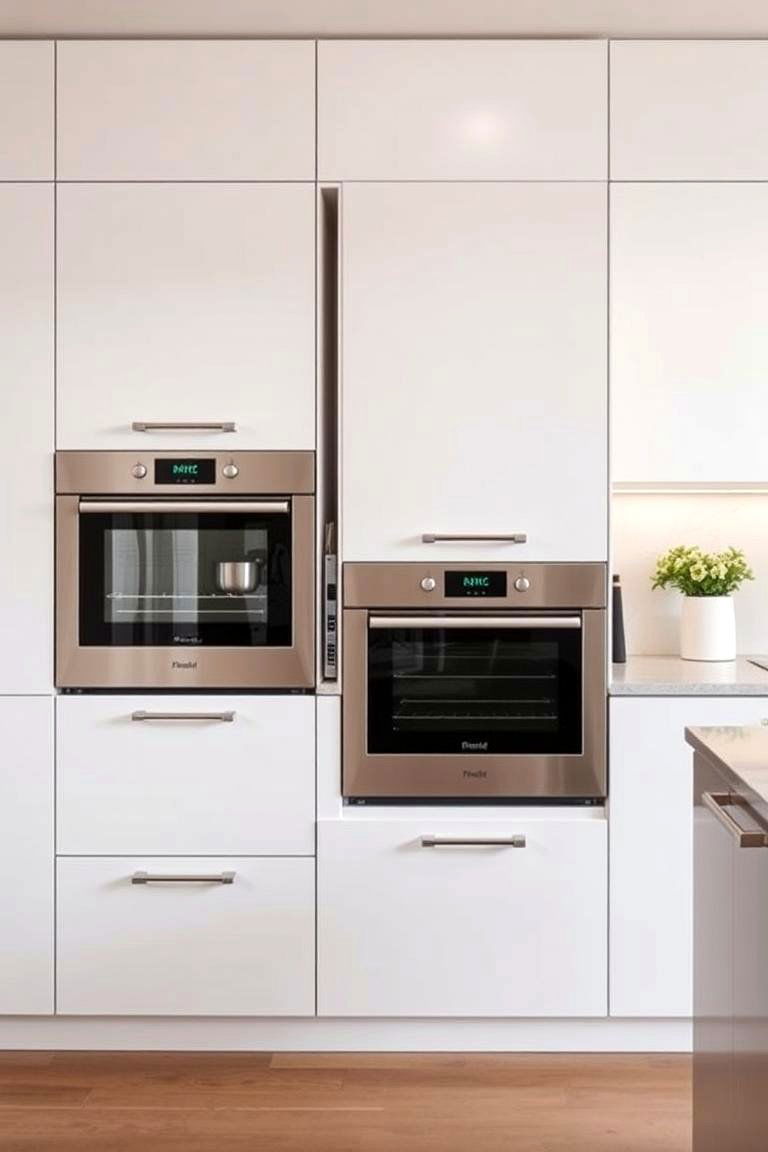
Built-in appliances help to maintain the sleek, minimal look of your kitchen by blending seamlessly into the cabinetry. Rather than having bulky, freestanding appliances, opt for built-in options like ovens, dishwashers, and refrigerators. These appliances are designed to integrate with the overall design, creating a cohesive and streamlined look. Not only does this enhance the visual appeal of the kitchen, but it also helps optimize space, giving you more room to move around and keeping your kitchen looking organized and uncluttered.
21. Maximize Vertical Space
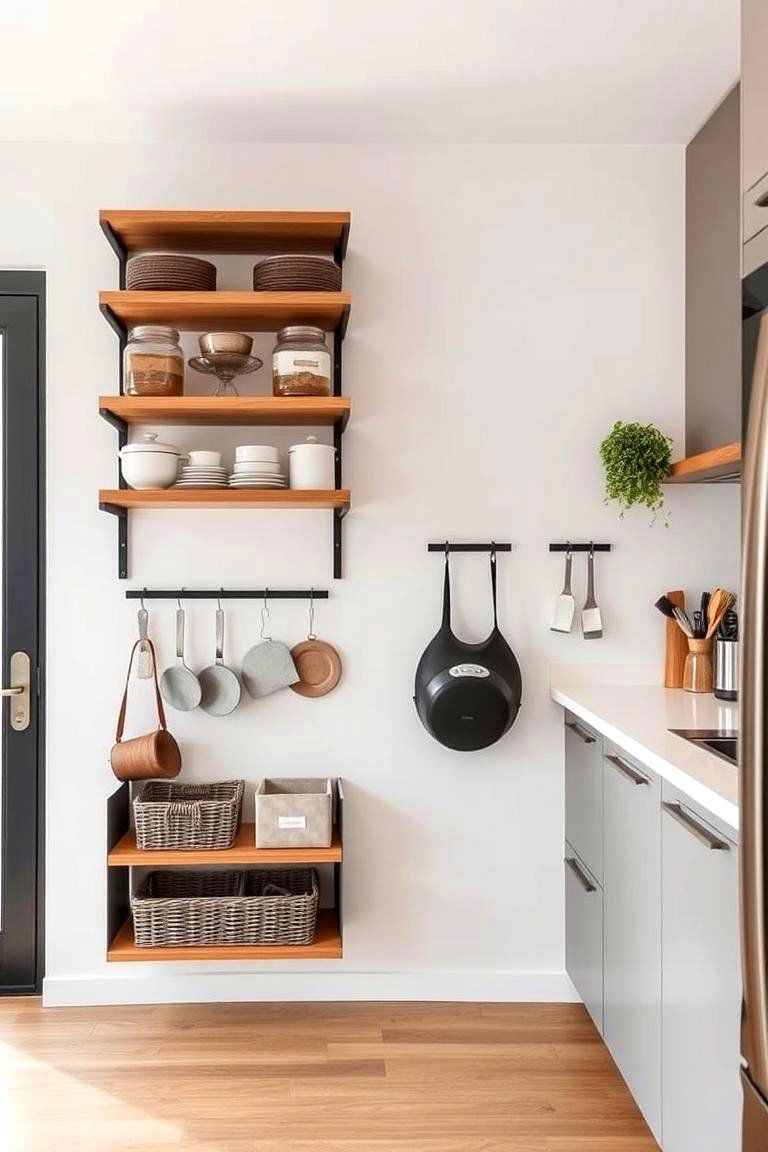
In a minimalist kitchen, it’s important to make the most of every inch of available space. Maximizing vertical space is an excellent way to add storage and functionality without cluttering the kitchen floor. Install shelves or hanging storage units high up on the walls to store items you don’t use daily. This keeps the countertops clear and the kitchen feeling open. By utilizing vertical space effectively, you can maintain a clean and organized environment without sacrificing storage options.
22. Choose Simple, Single-Color Cabinets
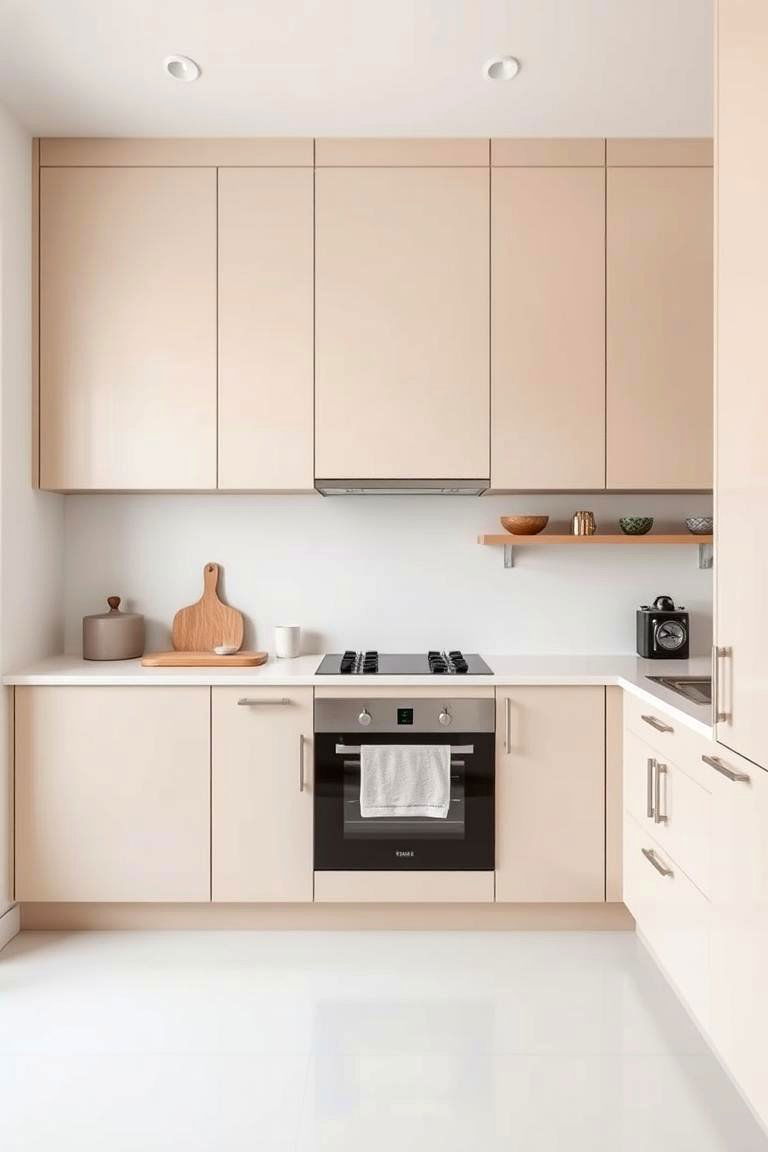
For a truly minimalist look, choose cabinetry in a single, solid color. This helps maintain a sleek, unified aesthetic and reduces visual clutter. Whether it’s matte black, white, or a soft neutral shade, single-color cabinets create a calm and cohesive atmosphere. Avoid overly ornate designs or excessive decoration. By sticking to one color, you ensure that the kitchen remains visually balanced and uncluttered, keeping the focus on the overall simplicity of the design.
23. Integrate Smart Storage Systems
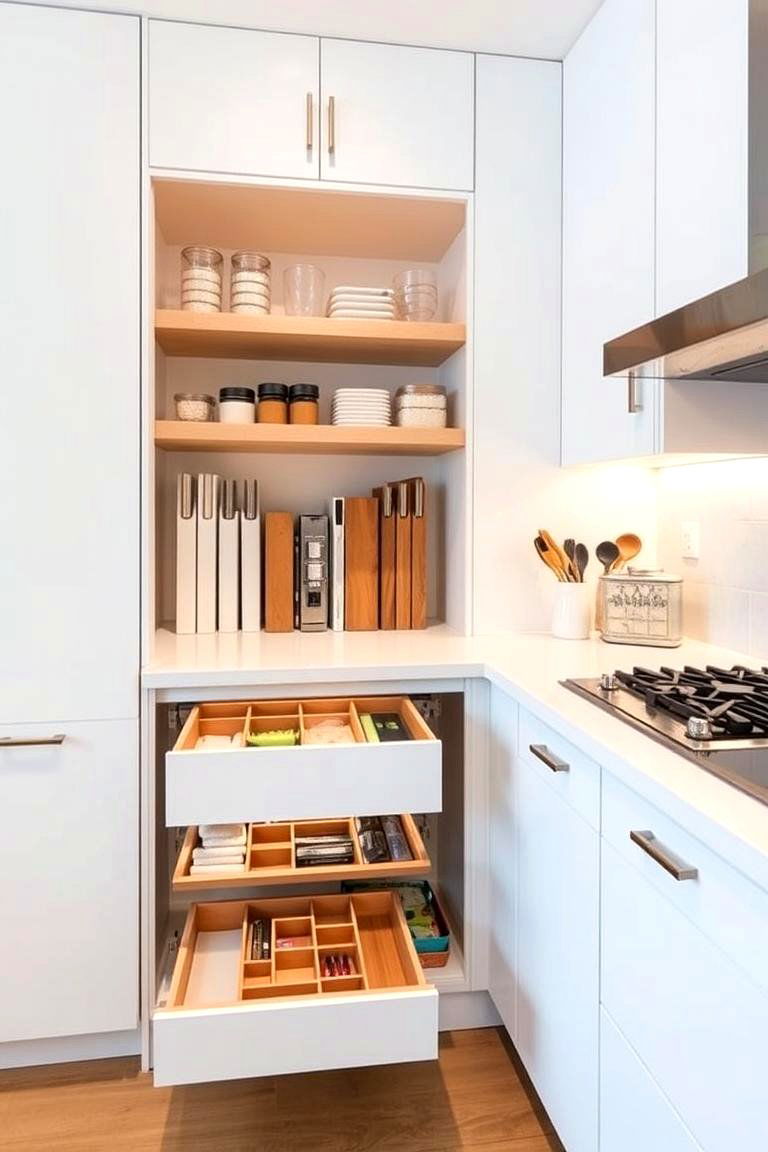
Smart storage solutions are essential for maintaining the minimalist aesthetic while maximizing functionality. Drawer dividers, pull-out pantries, and hidden compartments ensure that your kitchen remains organized without visible clutter. These clever systems help you store items efficiently and keep your counters clear. With smart storage, everything has its place, making it easier to maintain a minimalist kitchen. Choose modular storage units that can be customized to fit your needs and seamlessly integrate into your design.
24. Incorporate Minimalist Artwork
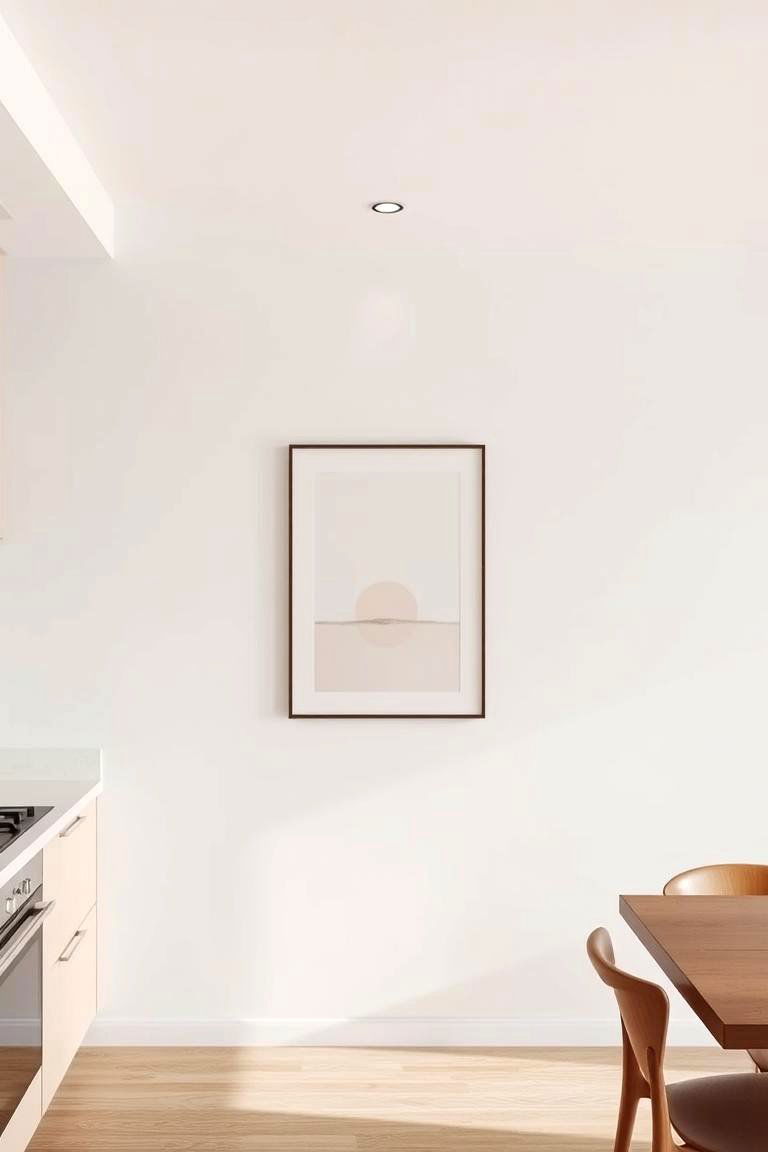
A single piece of minimalist artwork can elevate the design of your kitchen without overwhelming the space. Choose art with simple lines, muted colors, or abstract patterns that complement the overall aesthetic of the room. Avoid overcrowding the walls with multiple pieces; instead, focus on one statement piece that draws the eye without creating visual clutter. Minimalist art enhances the clean, serene atmosphere of the kitchen while adding a touch of personality and style to the room.
Conclusion:
By embracing these 24 minimalist kitchen ideas, you can transform your space into a serene, functional, and stylish environment. Whether it’s through simple storage solutions, minimalist furniture, or natural materials, the goal is to create a space that feels open, organized, and effortless. Minimalism doesn’t mean sacrificing style—rather, it’s about embracing simplicity and making your kitchen more efficient and visually appealing. If you’re ready to create a peaceful, practical space that’s both beautiful and functional, these minimalist kitchen ideas will guide you every step of the way.


